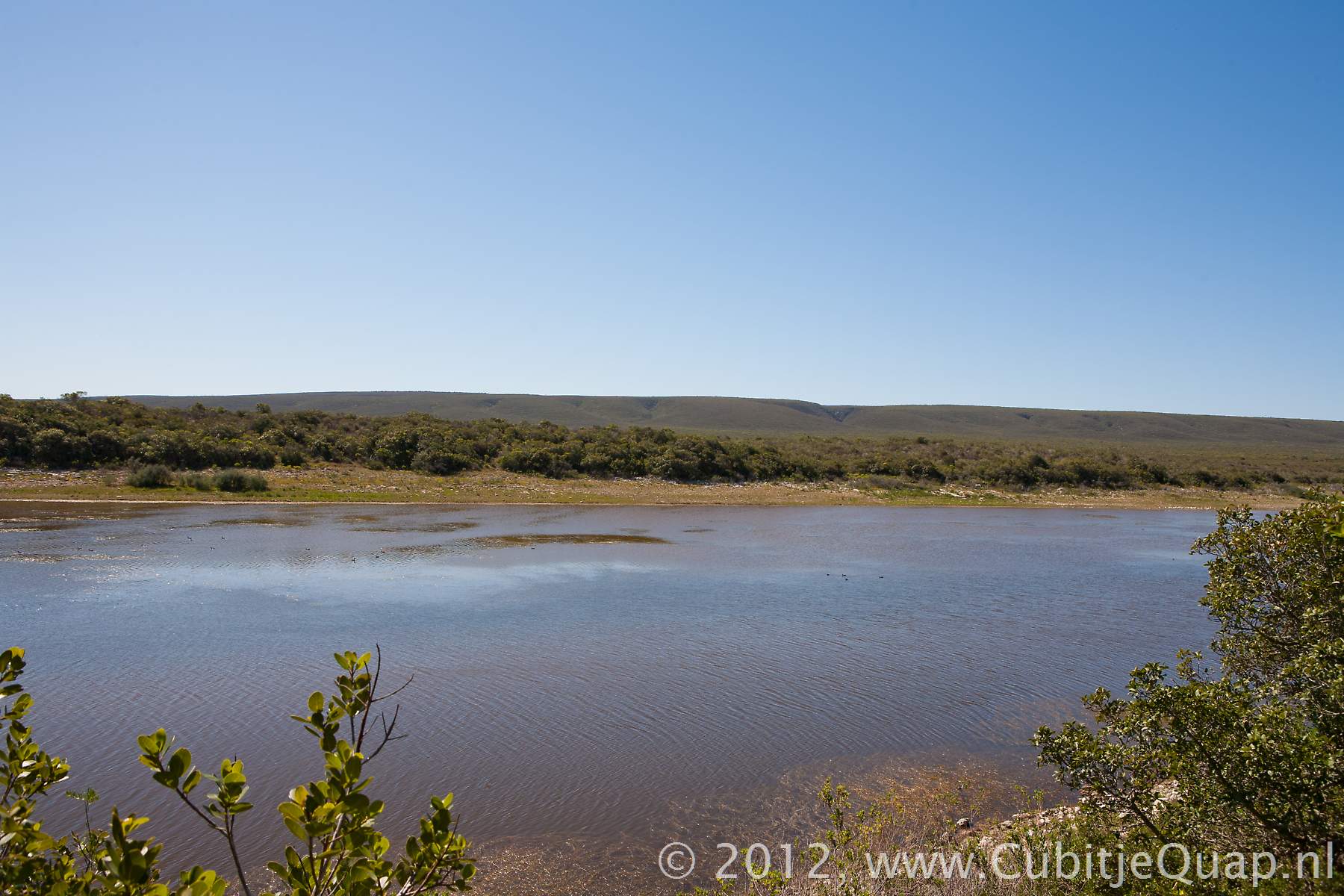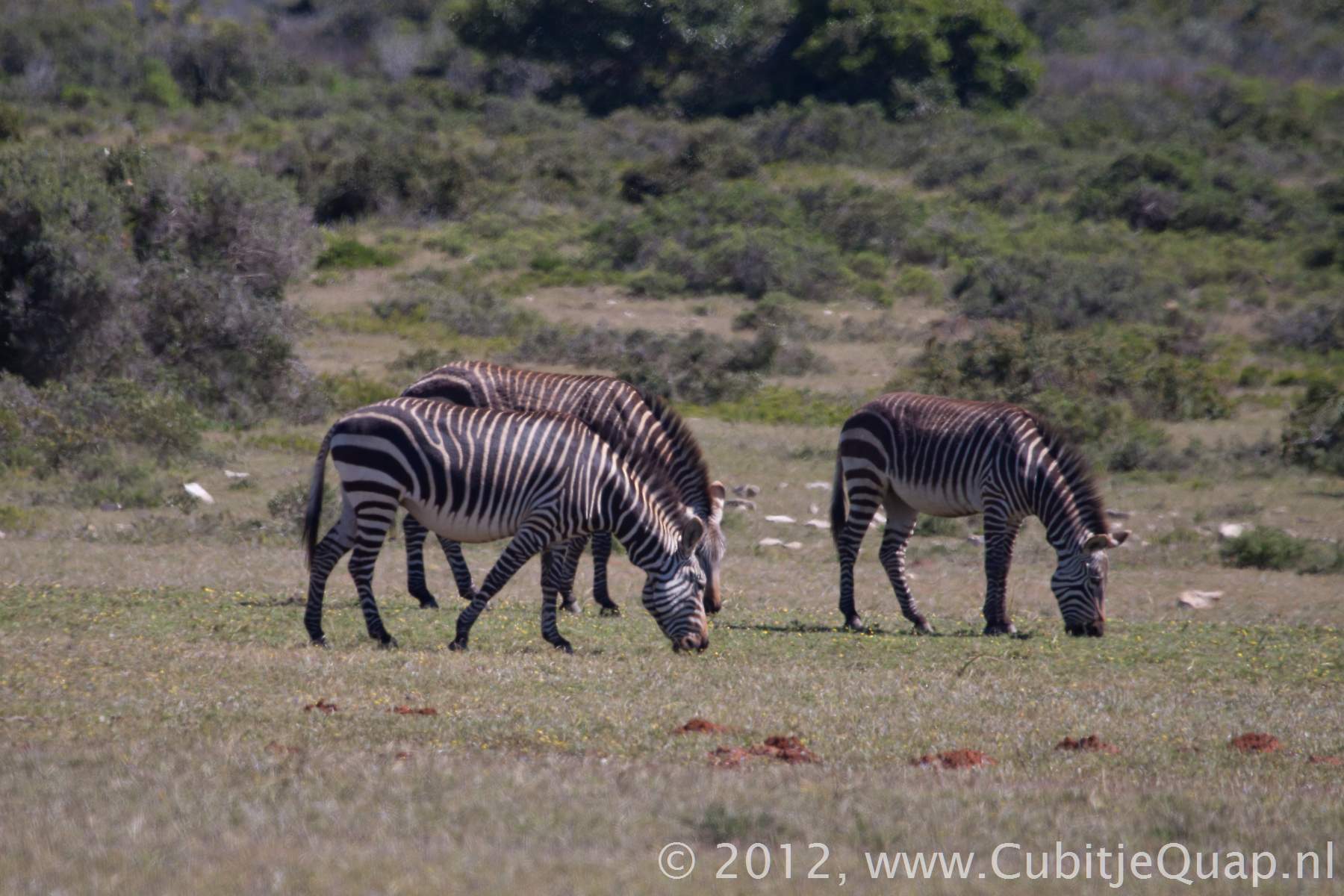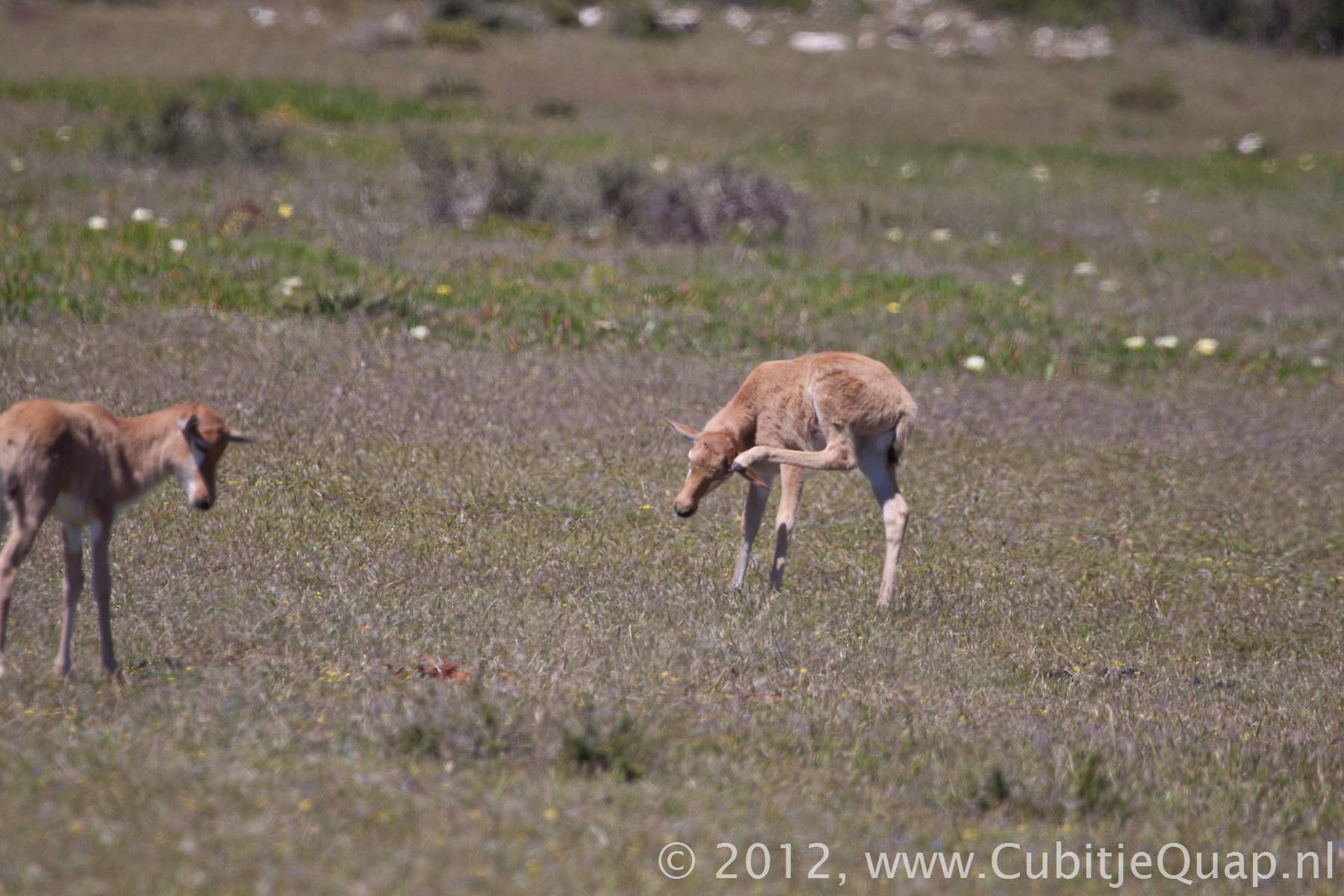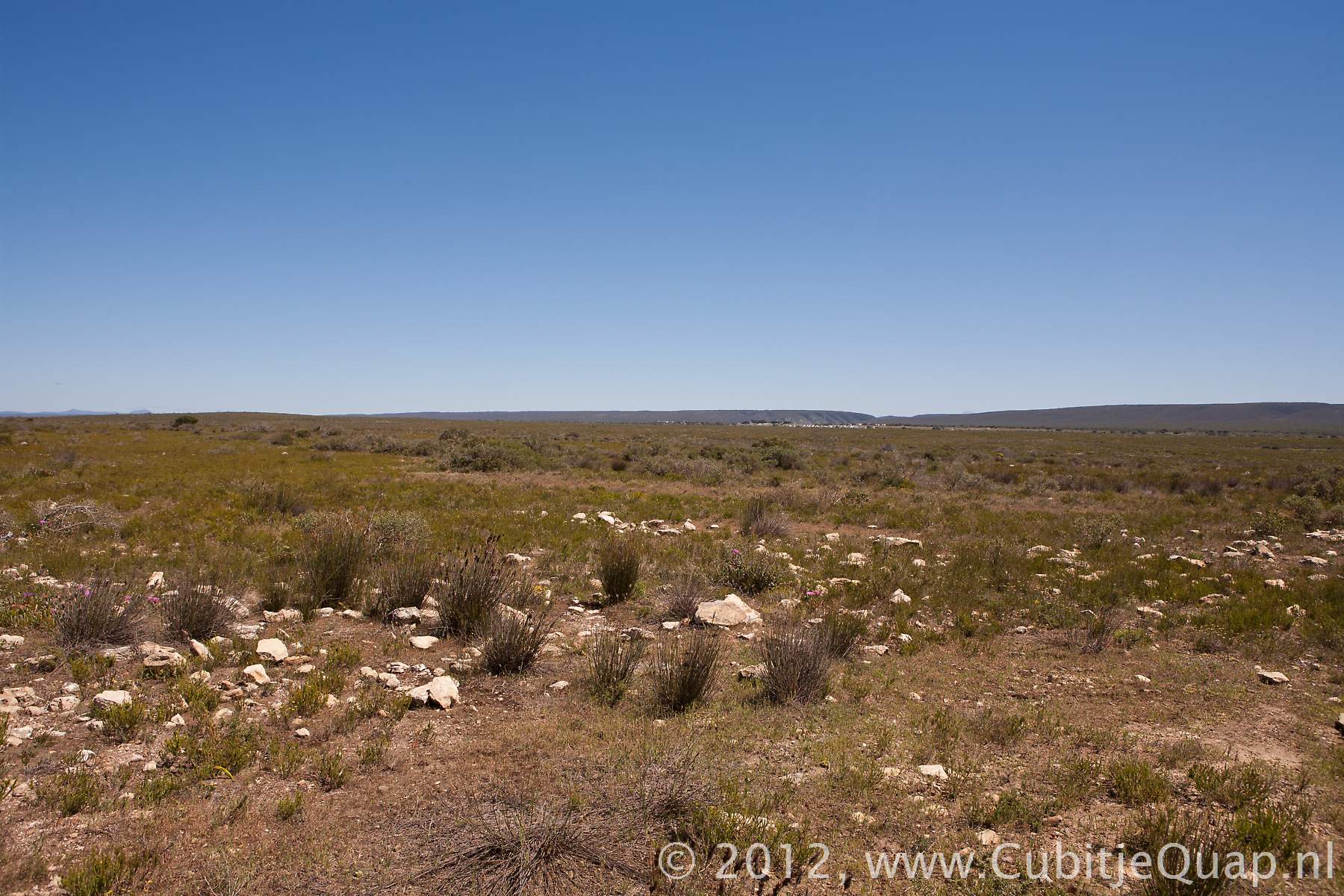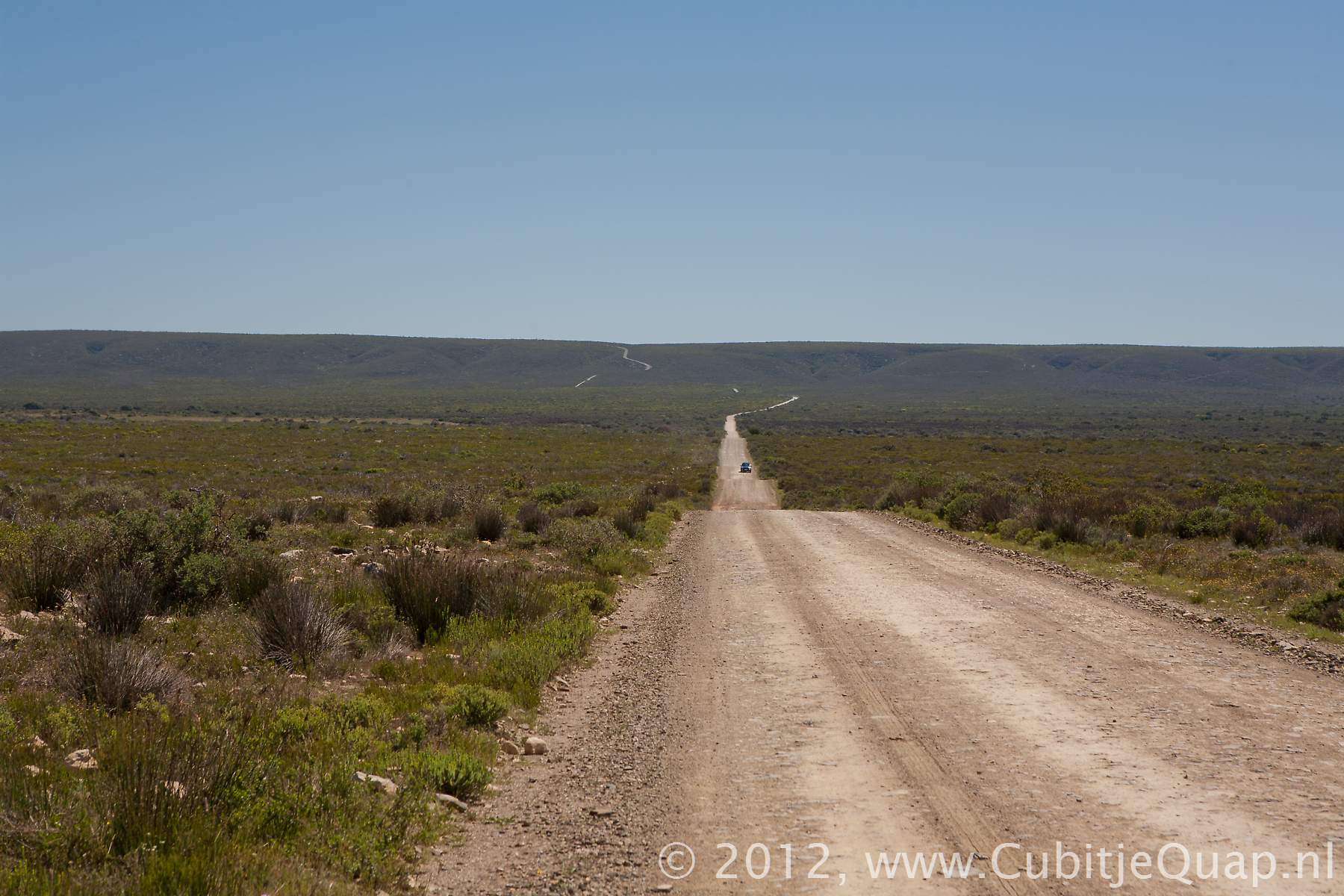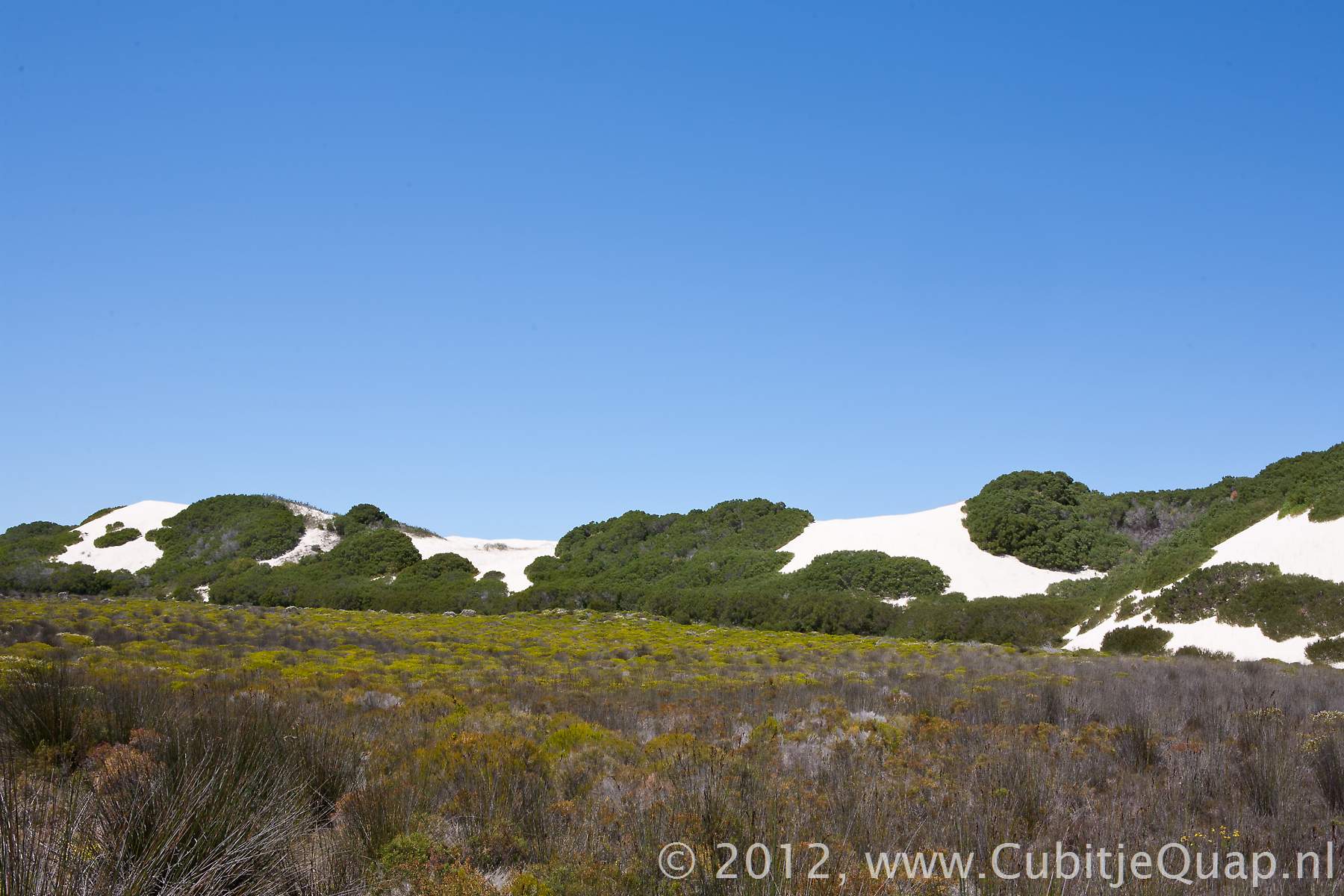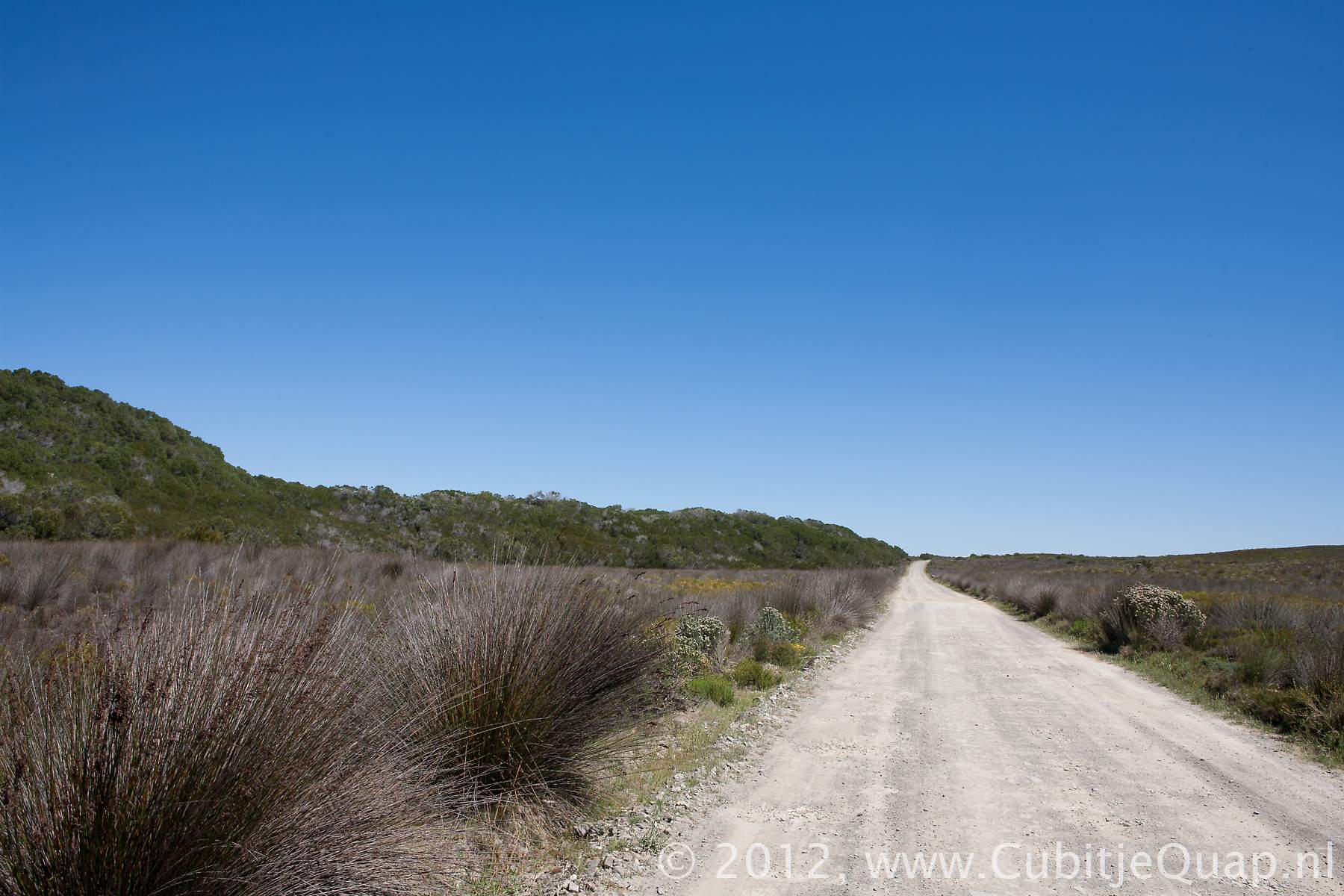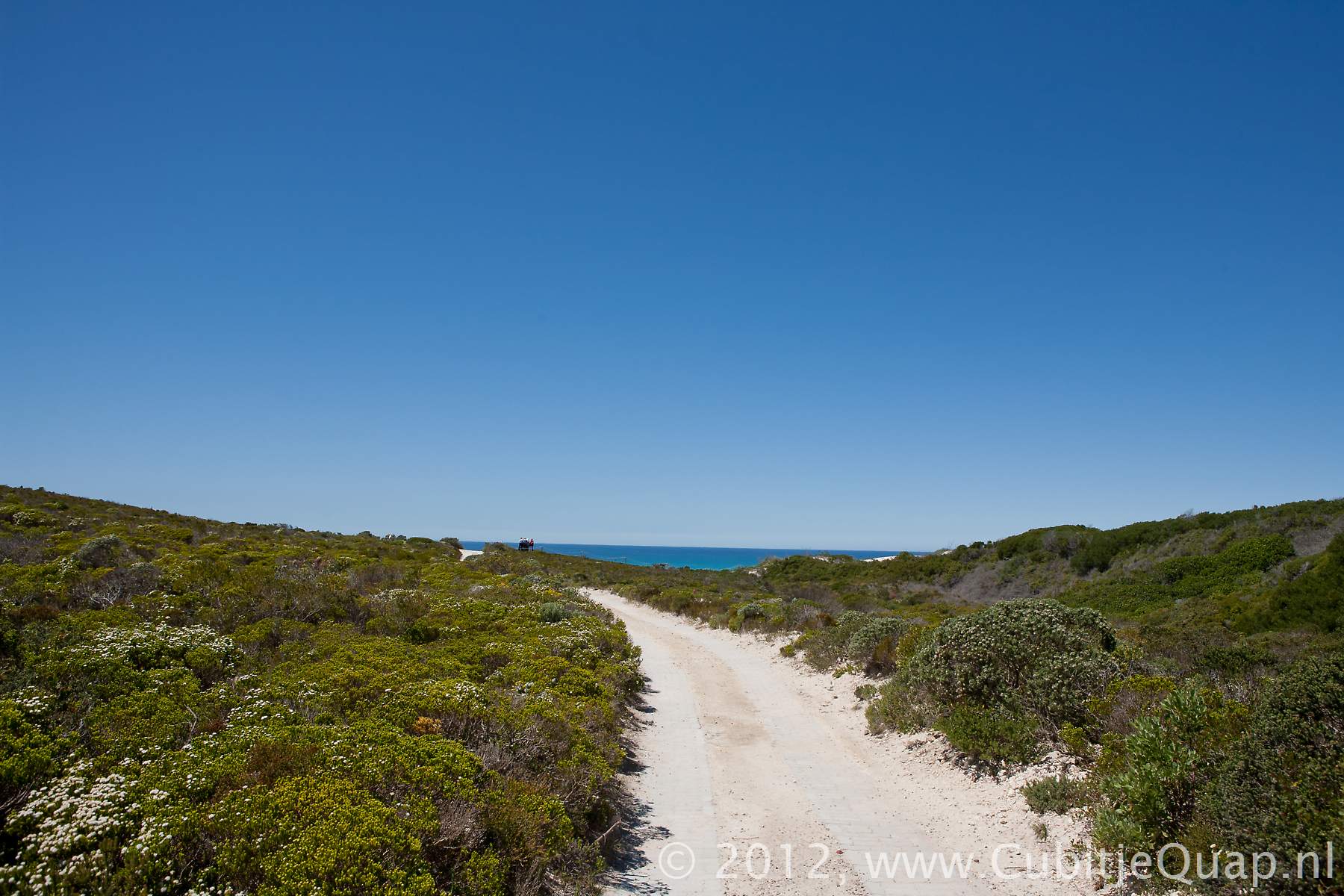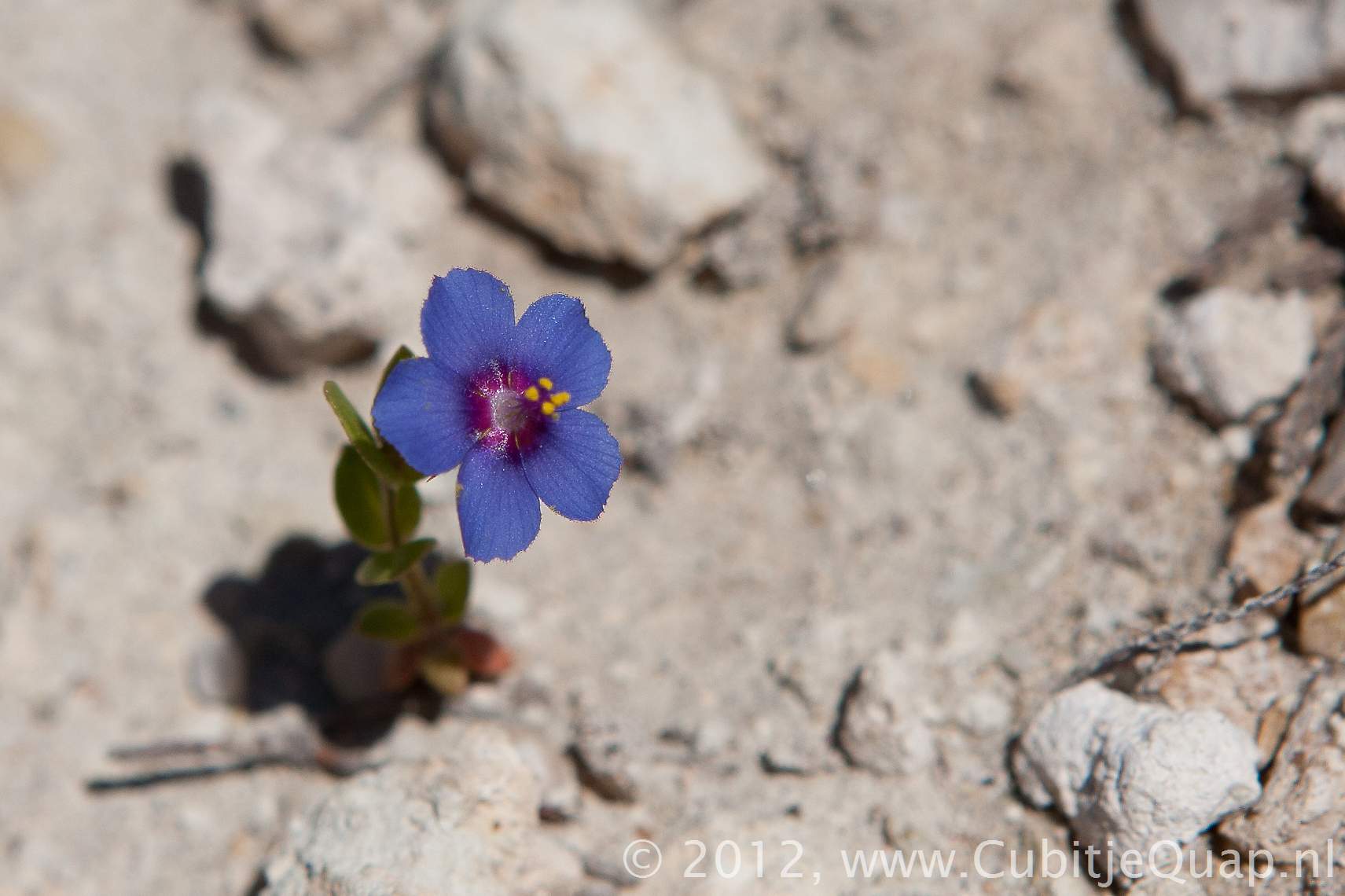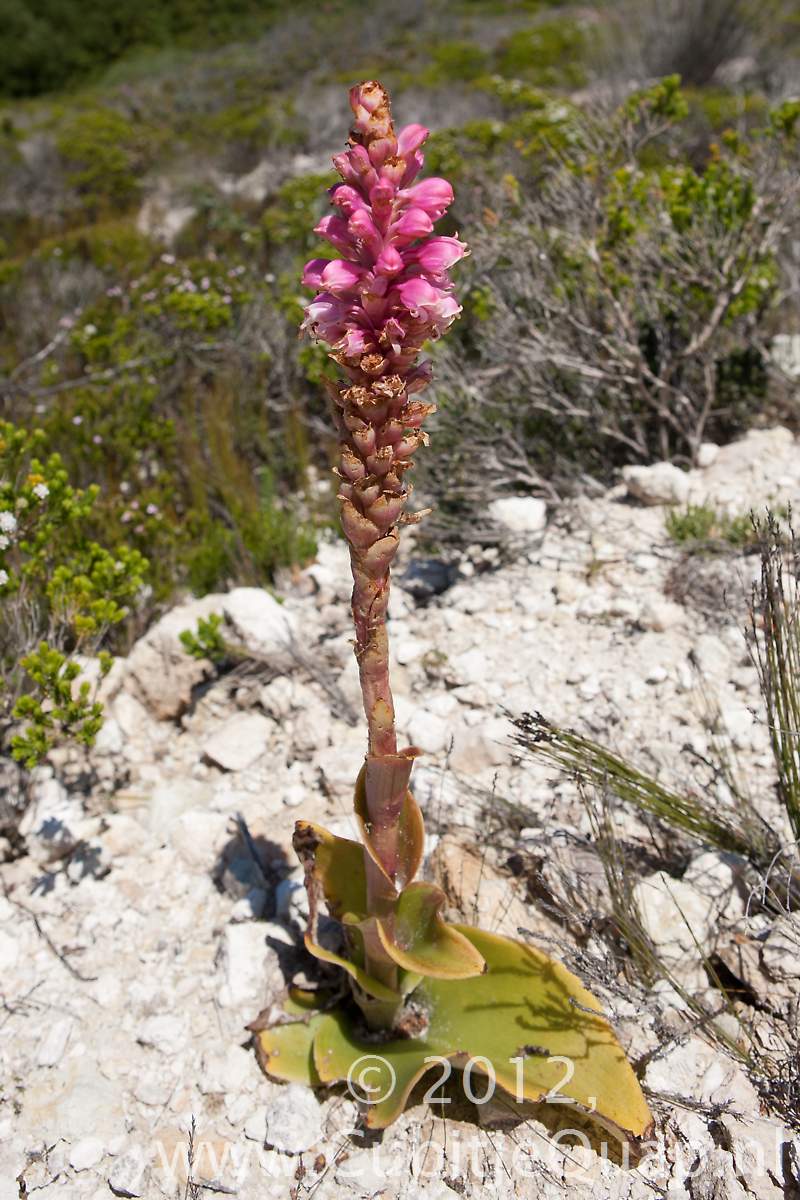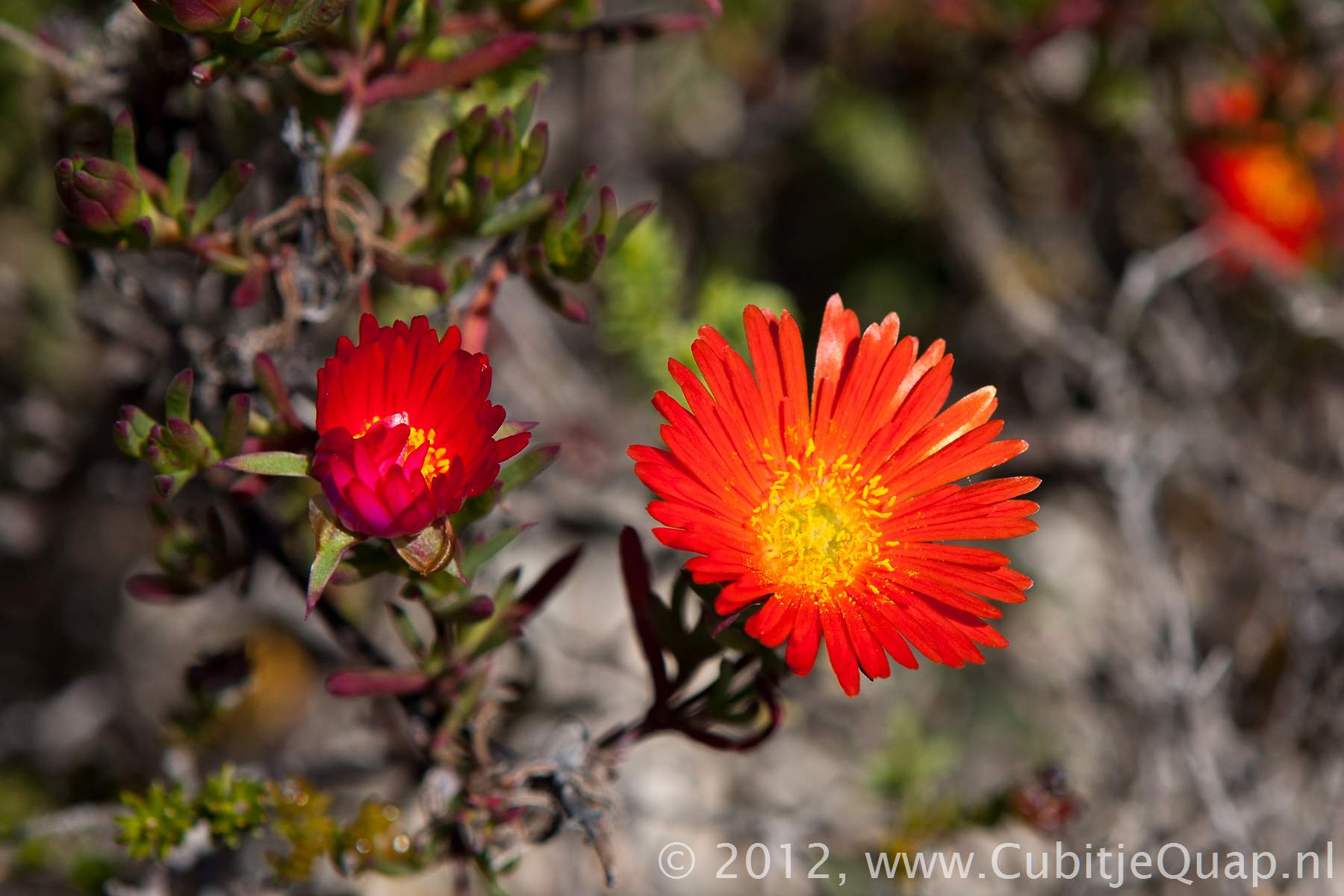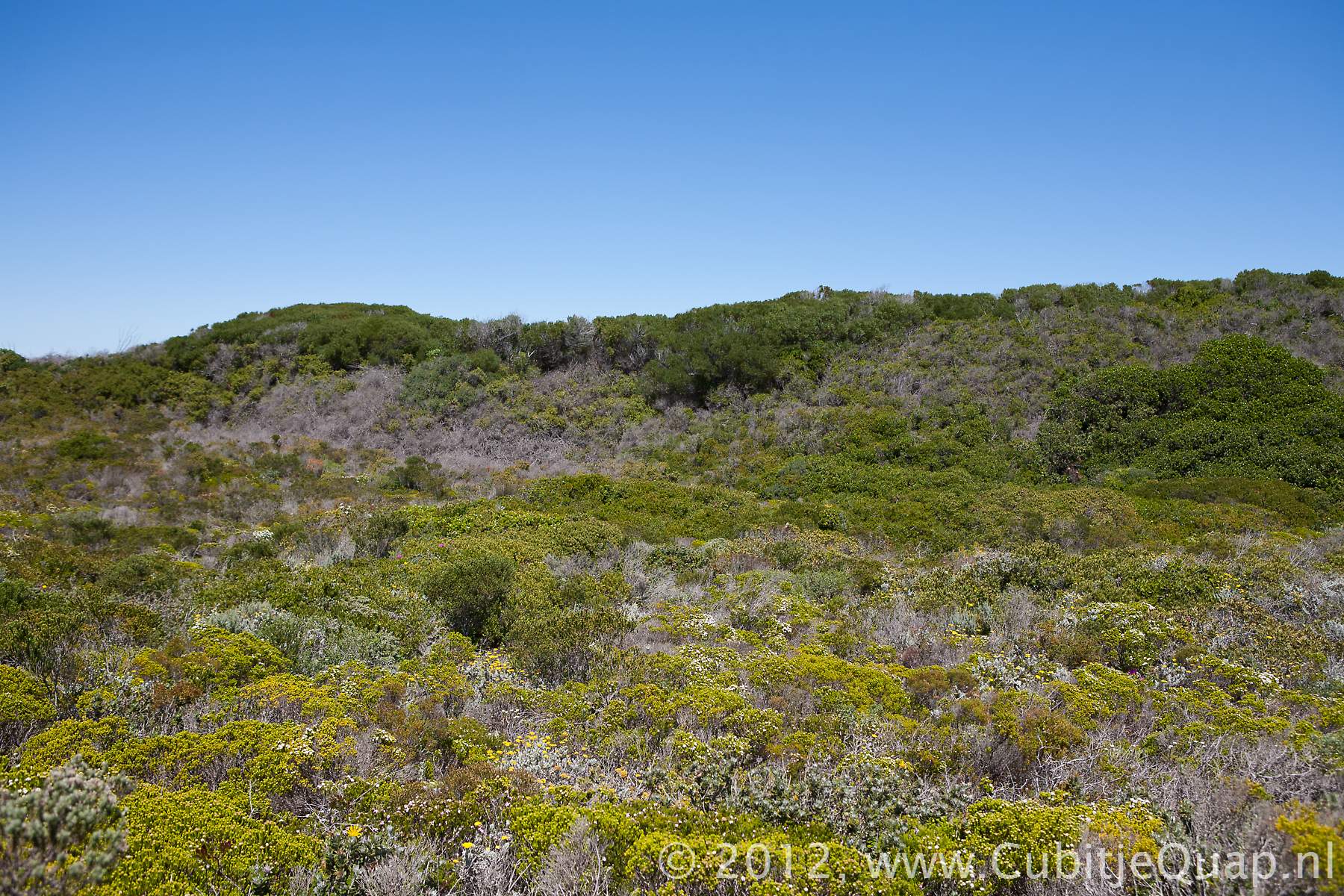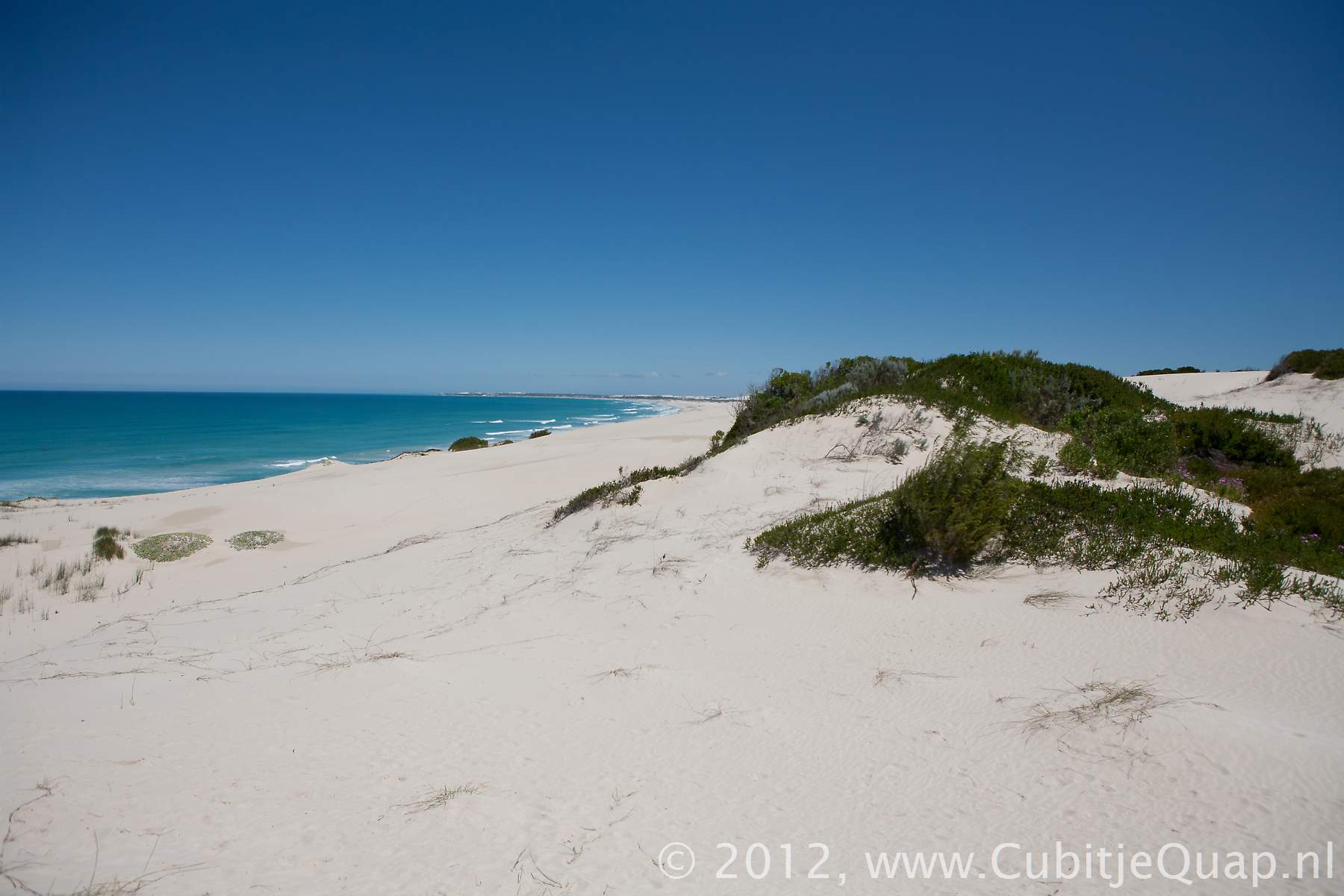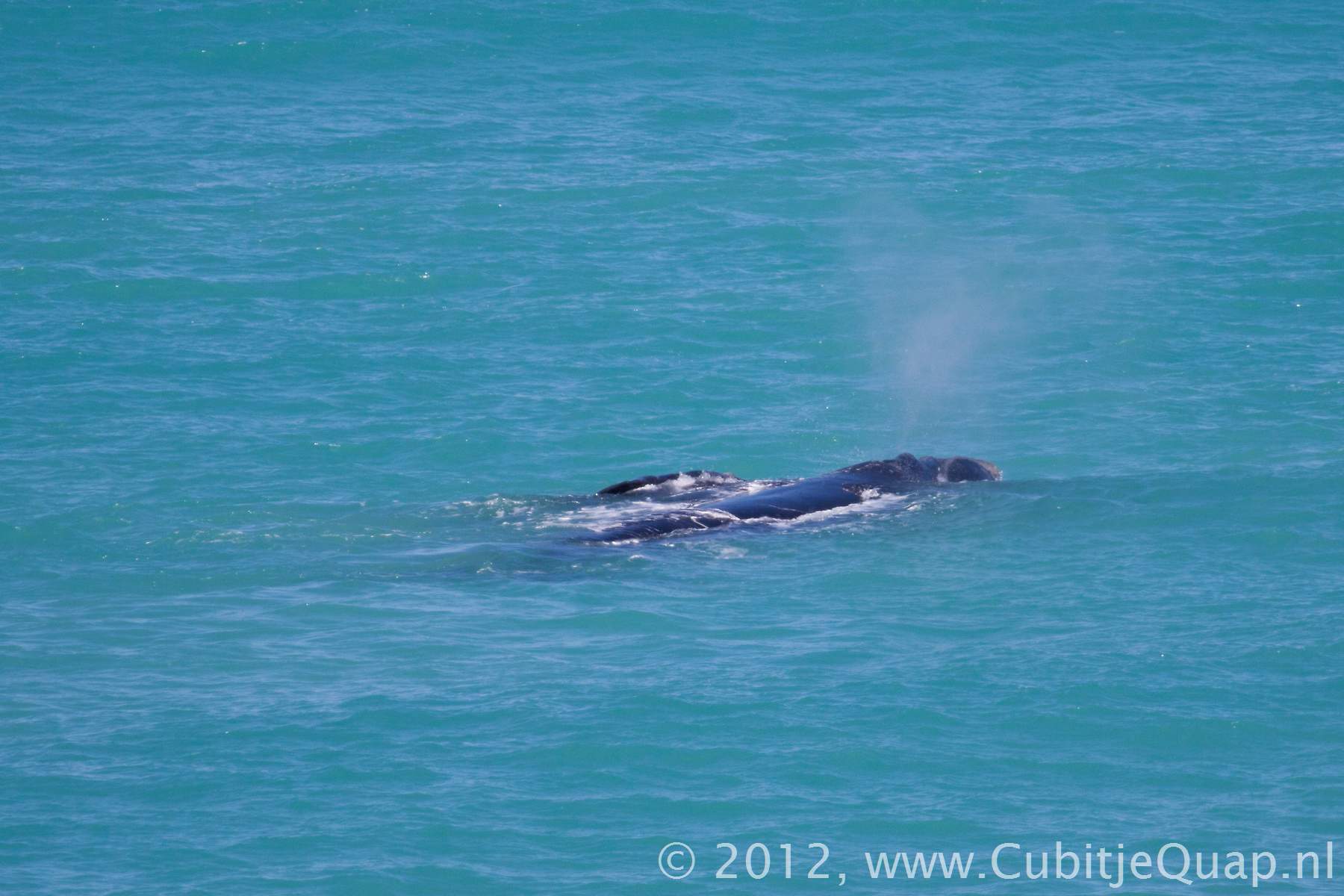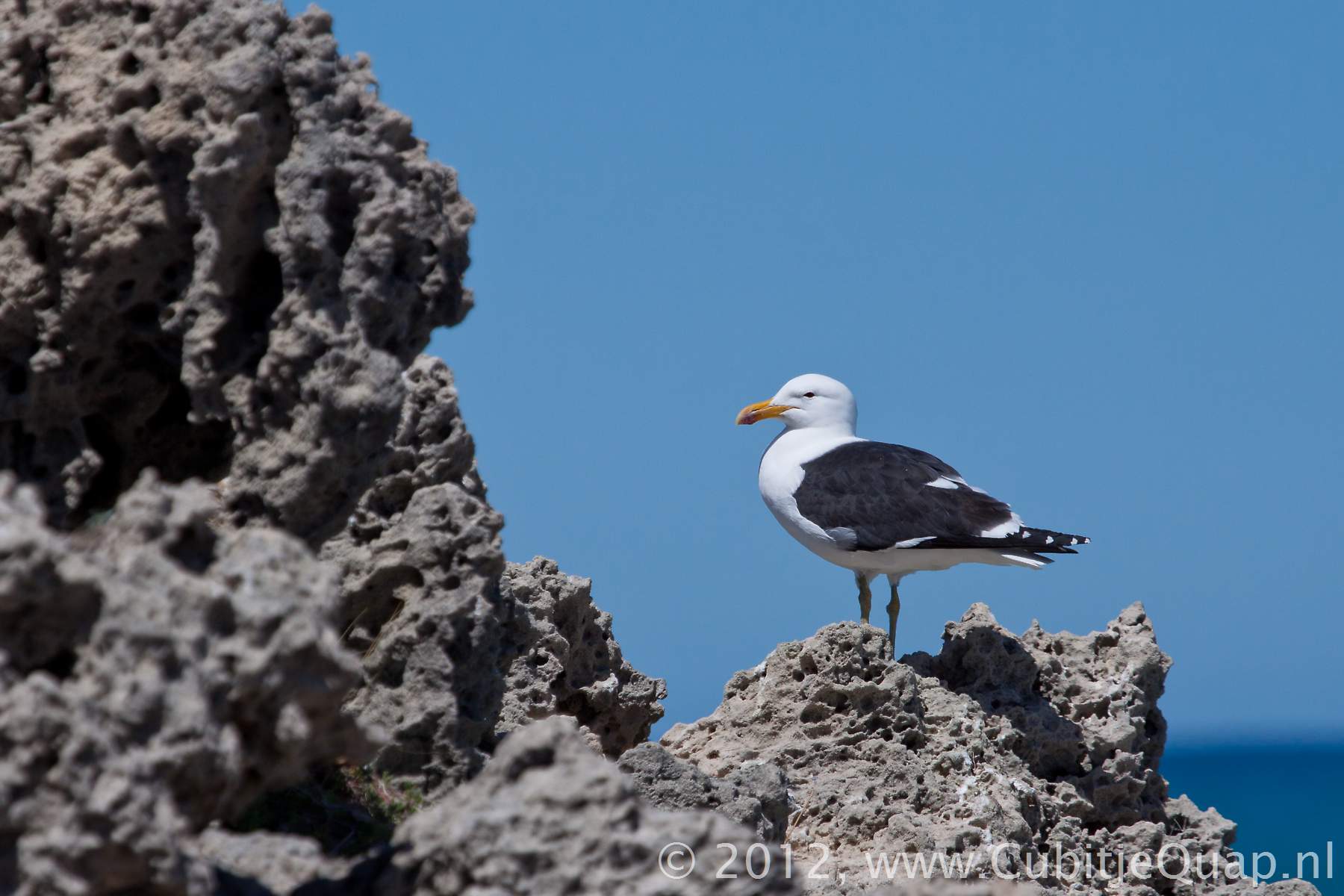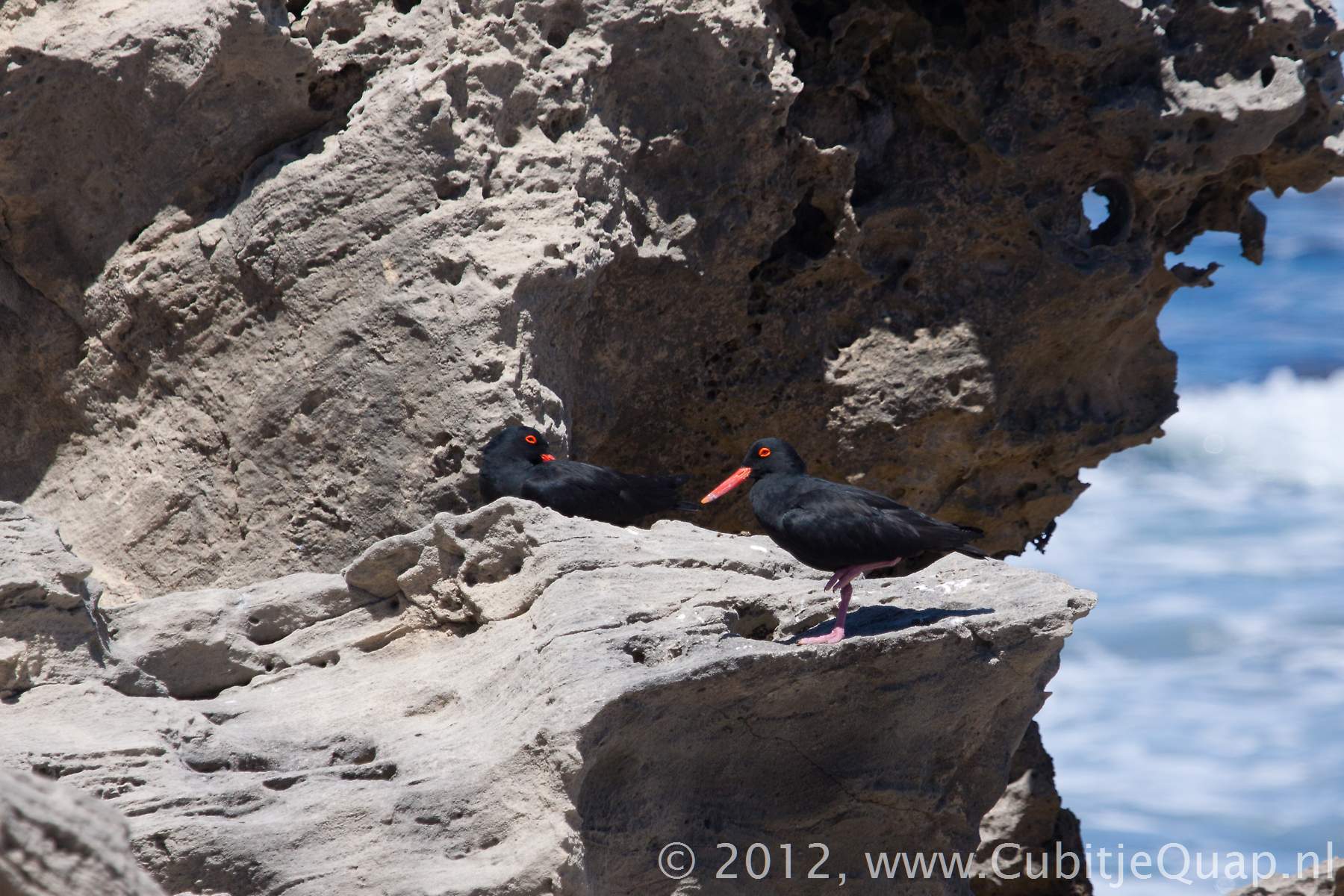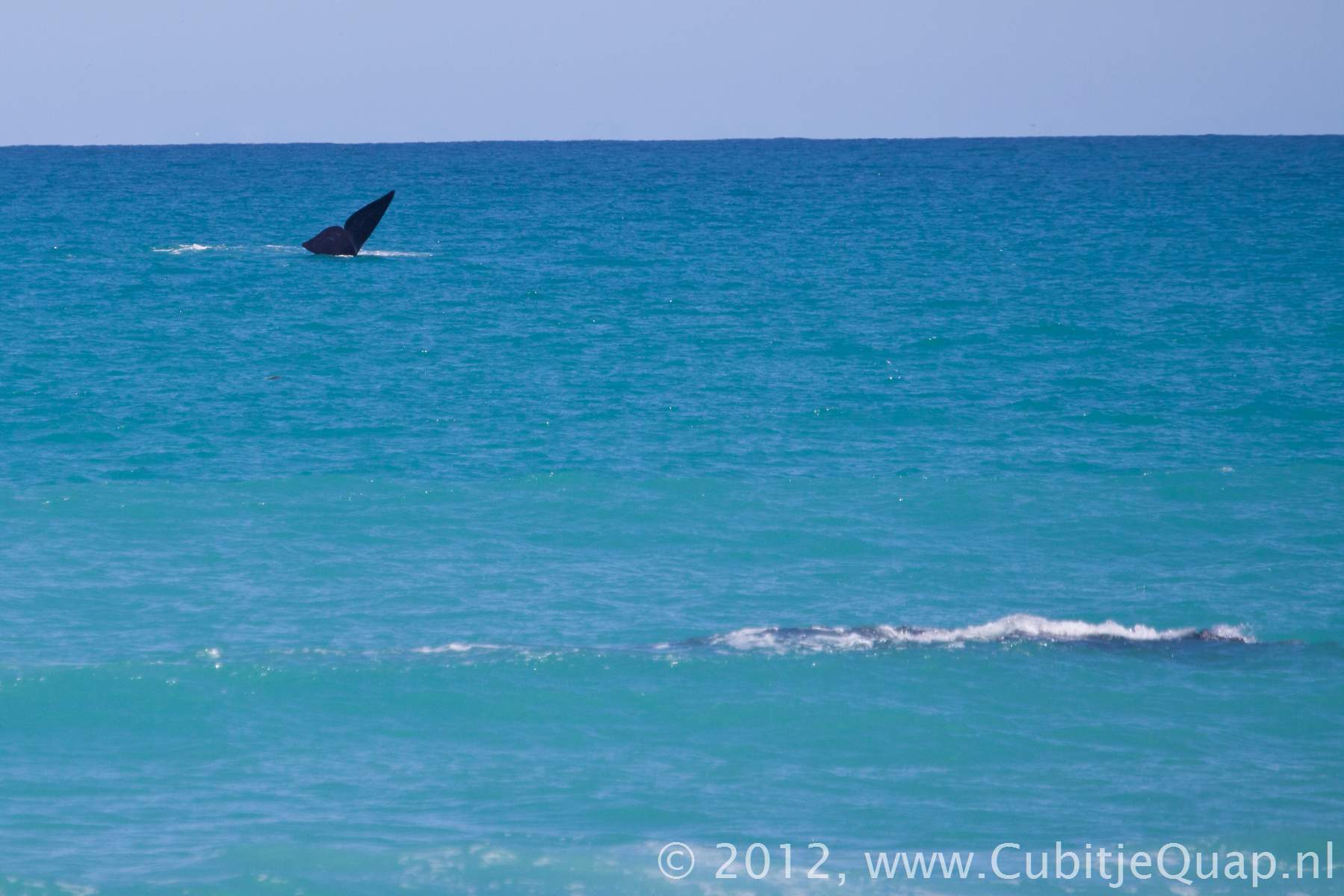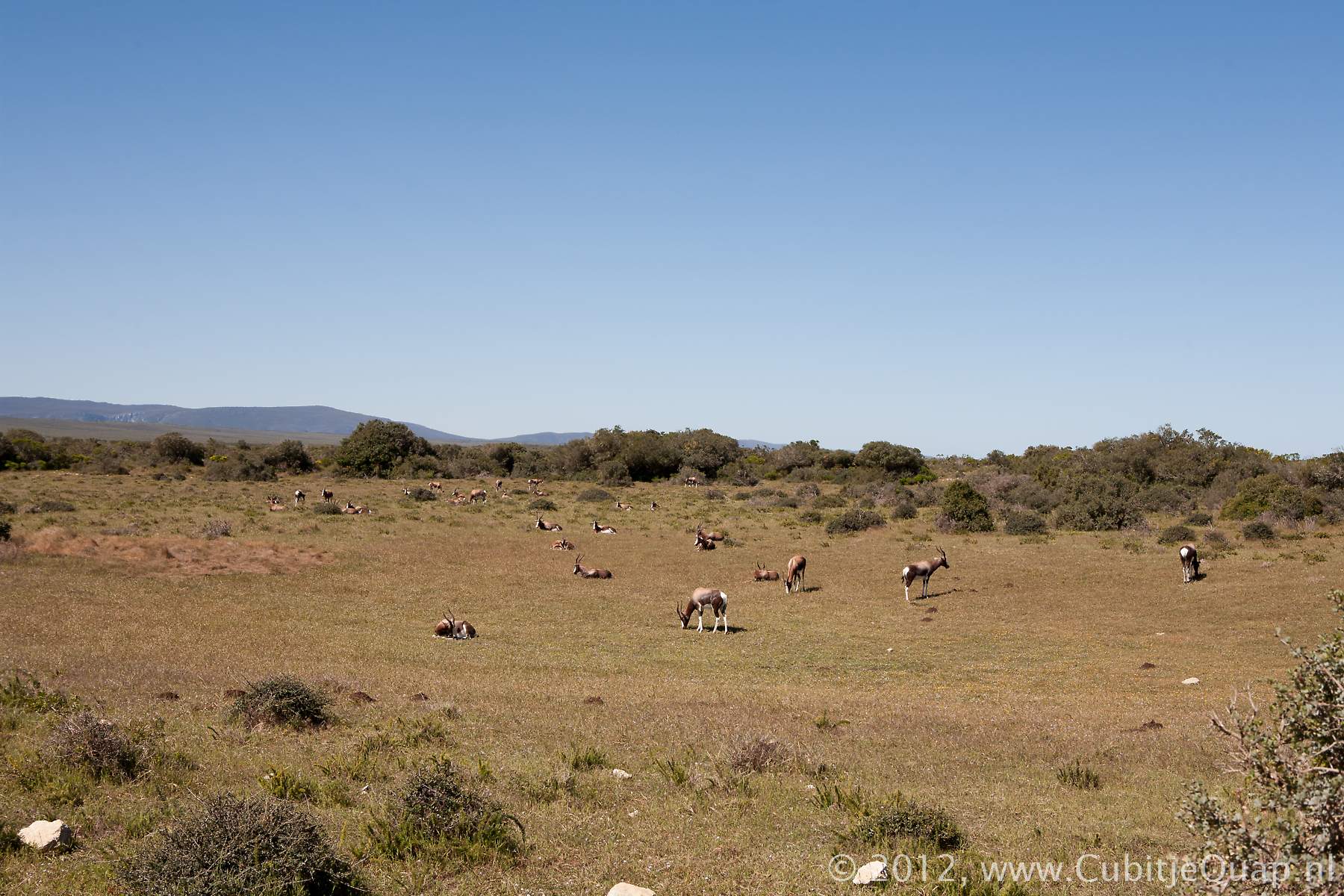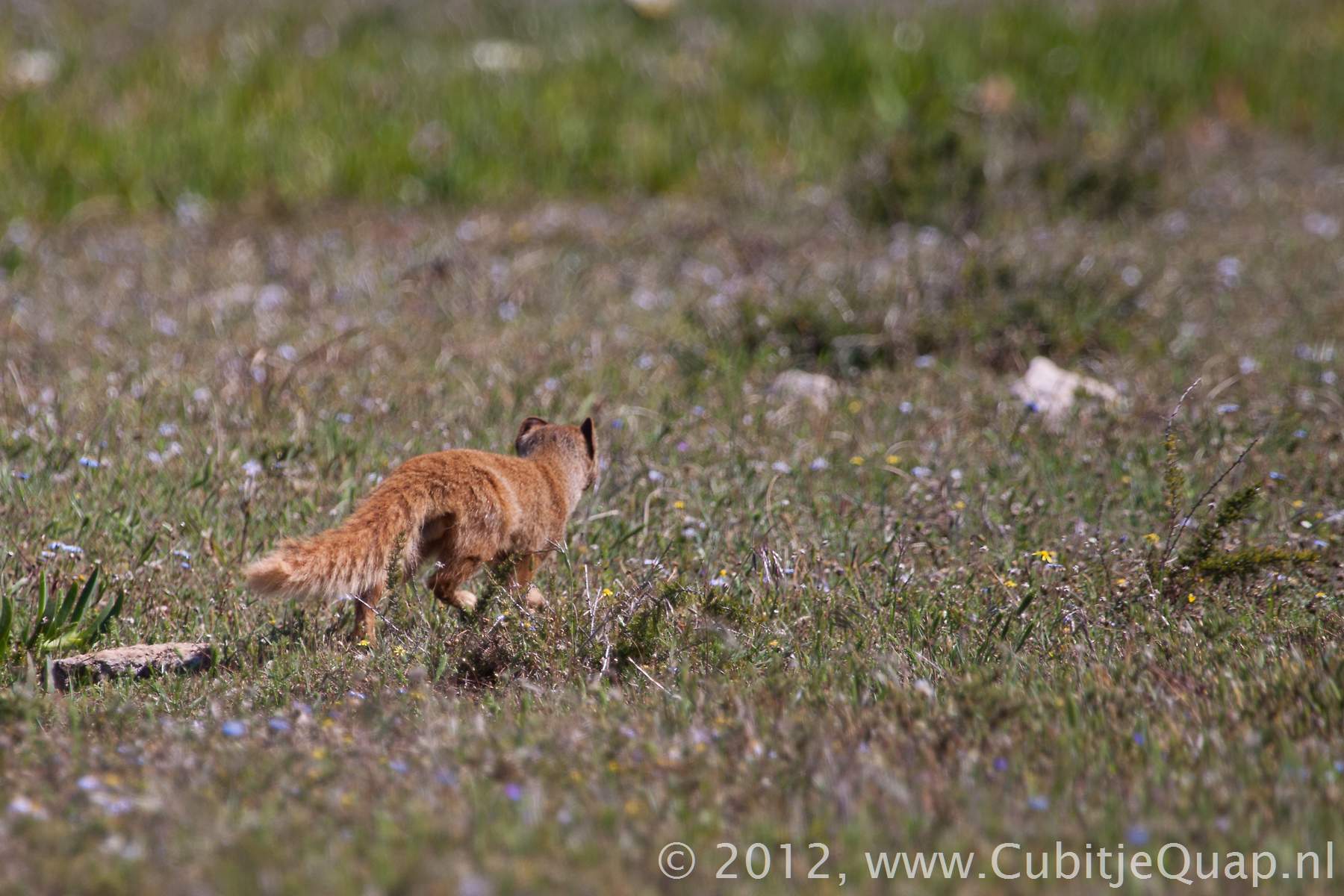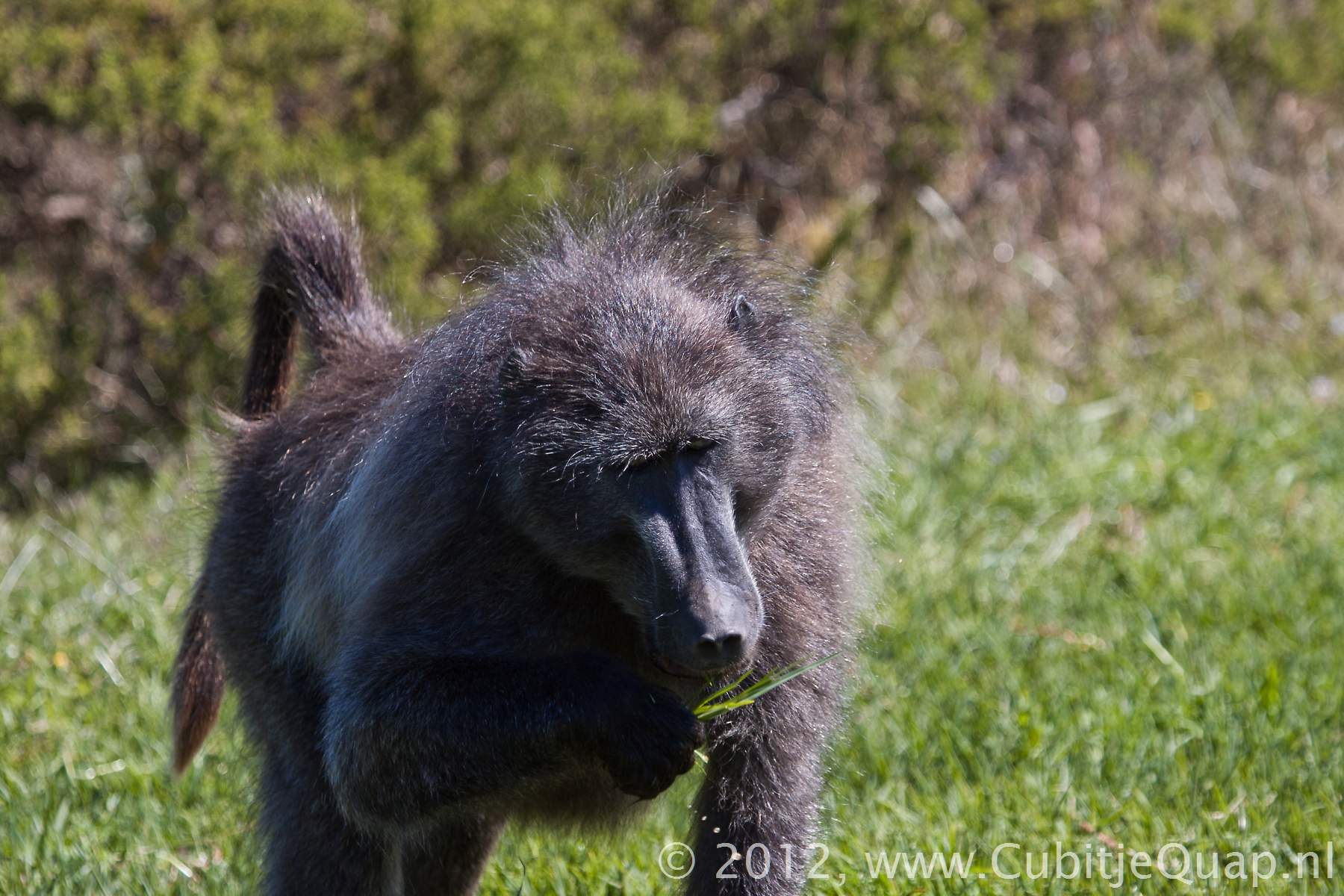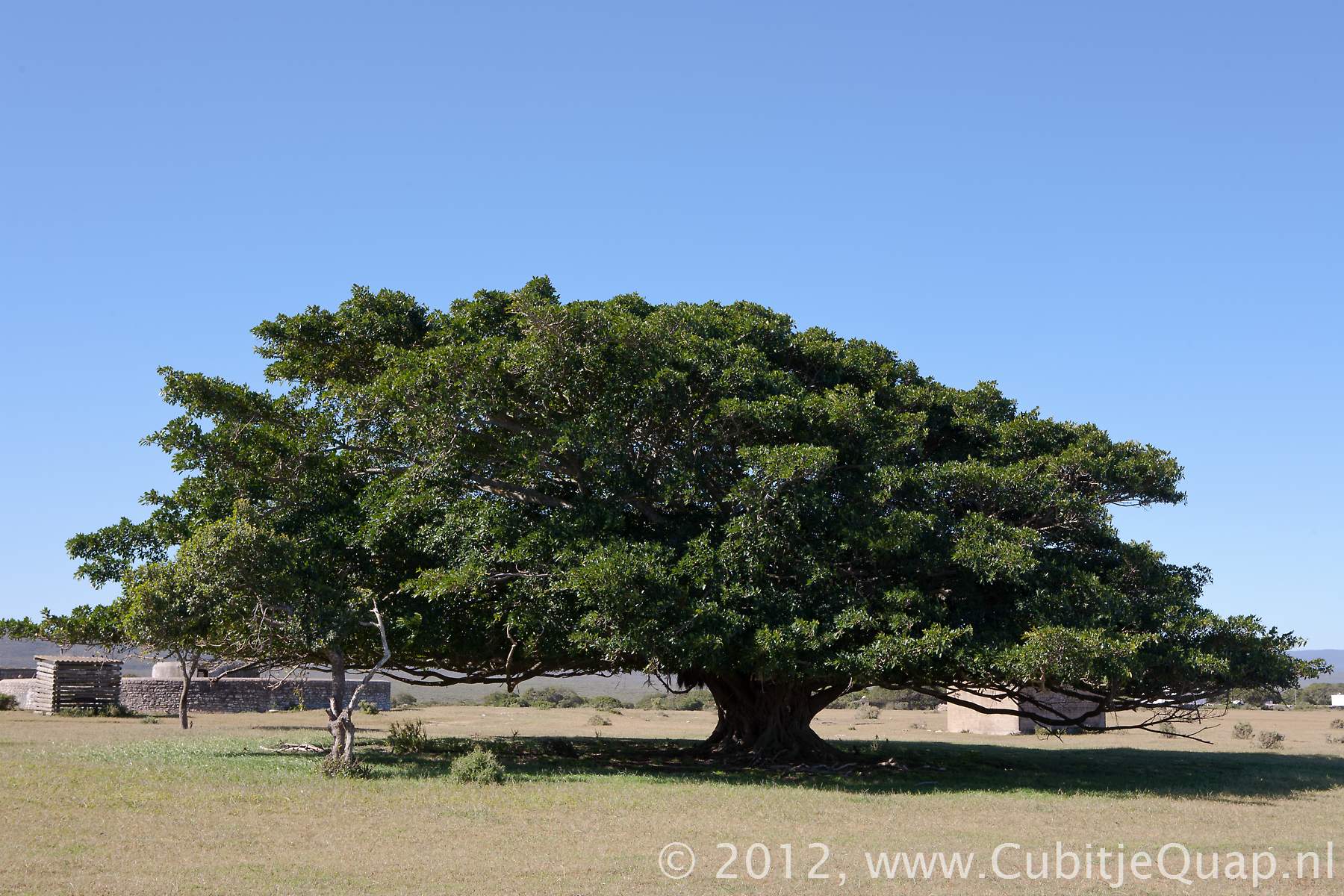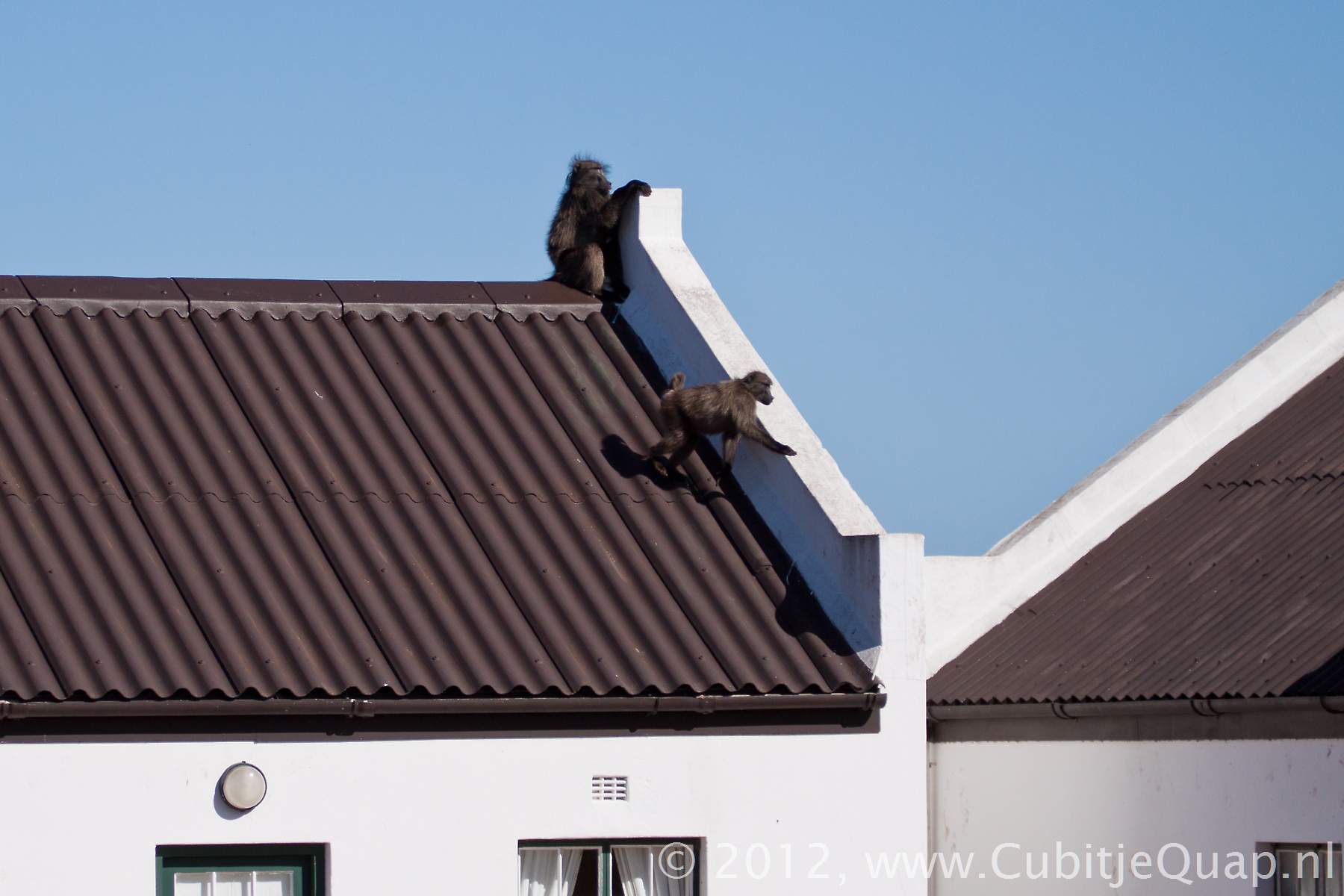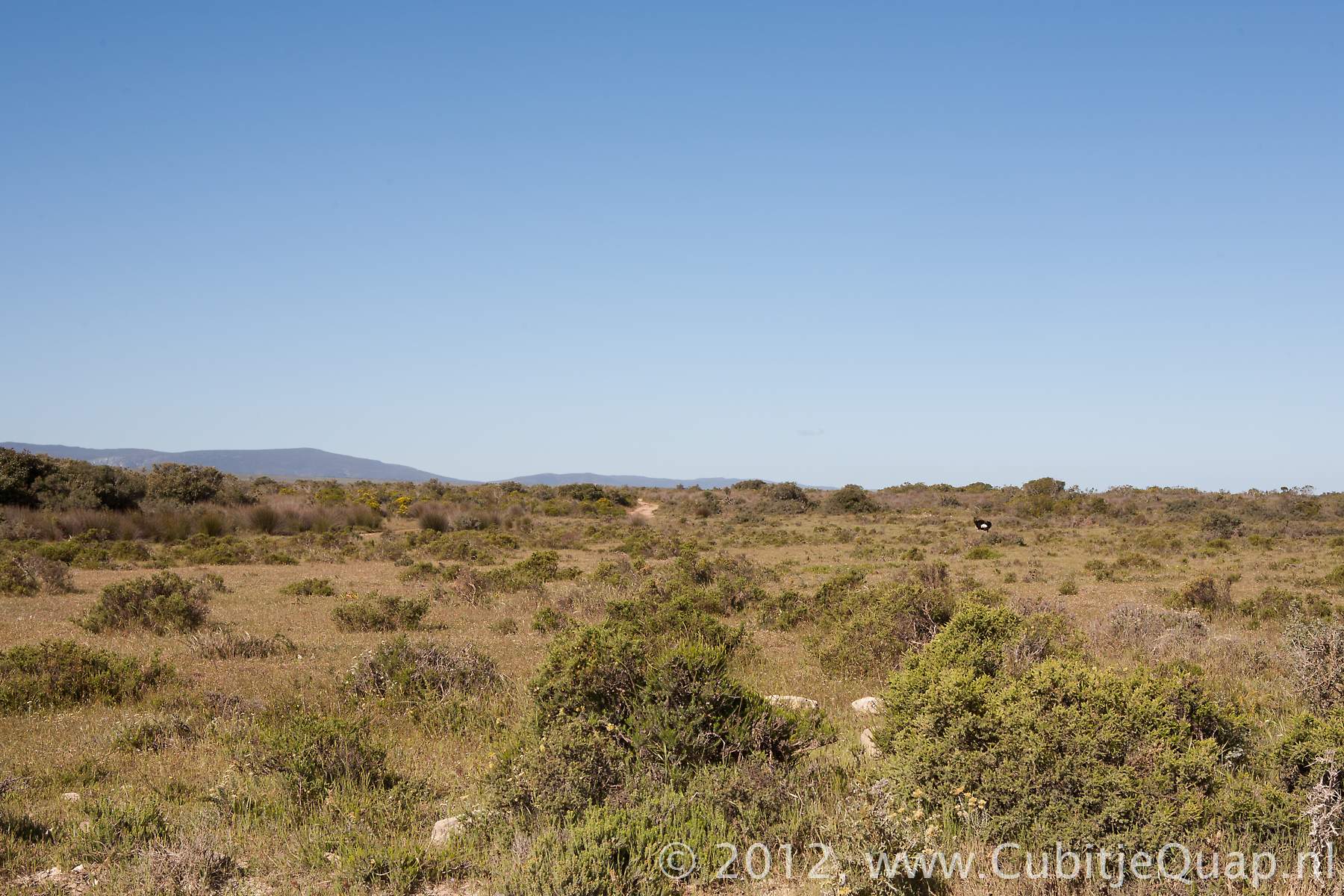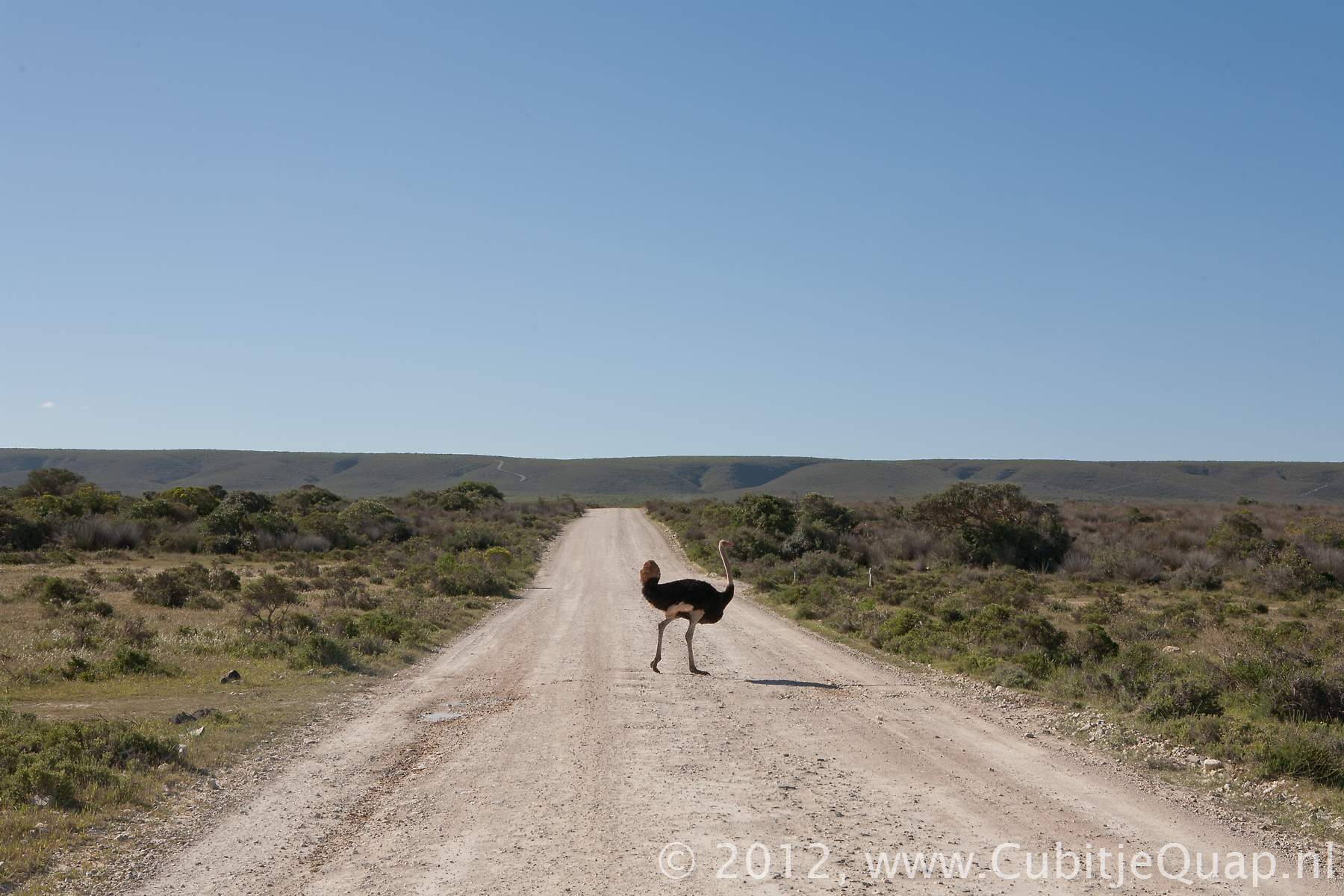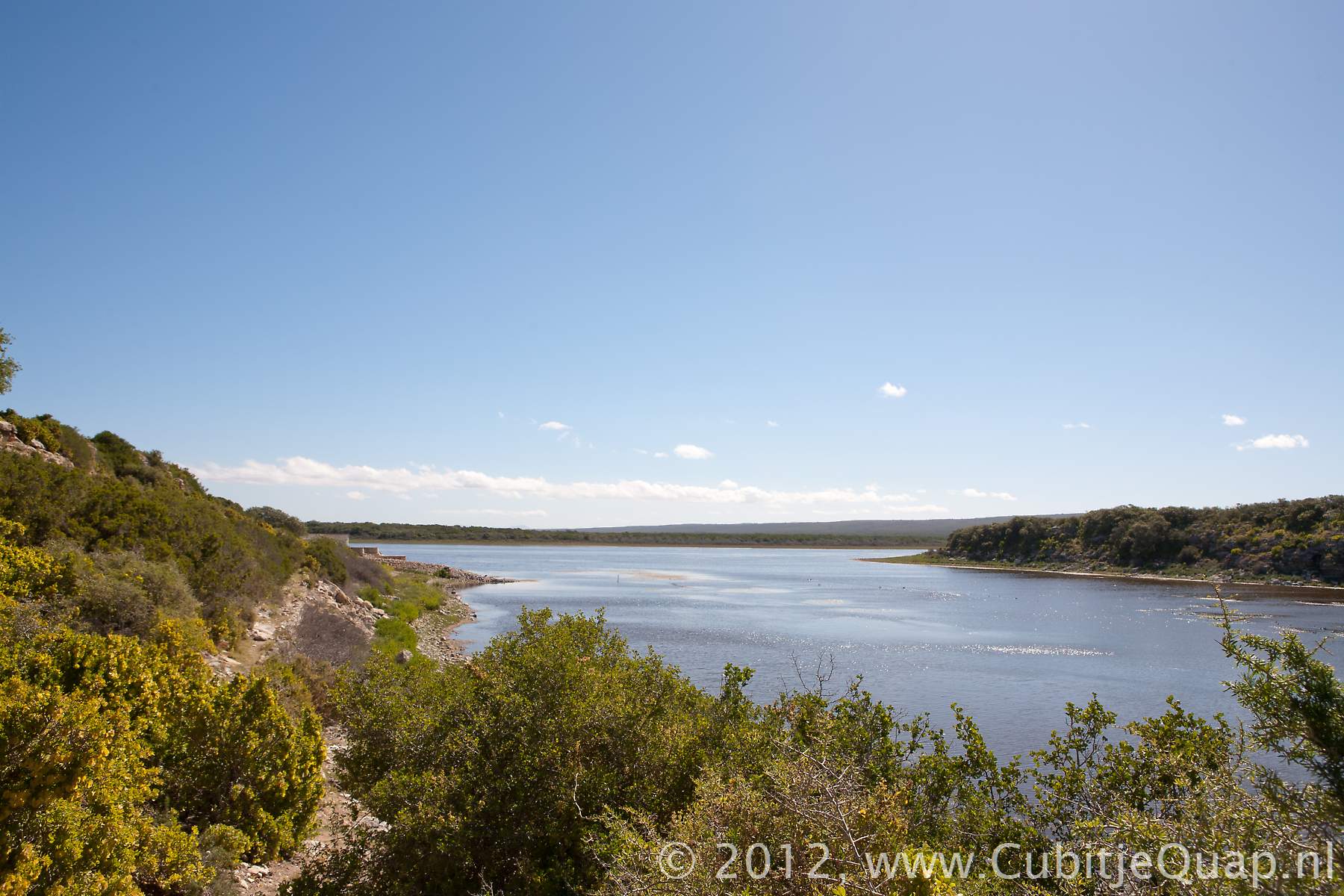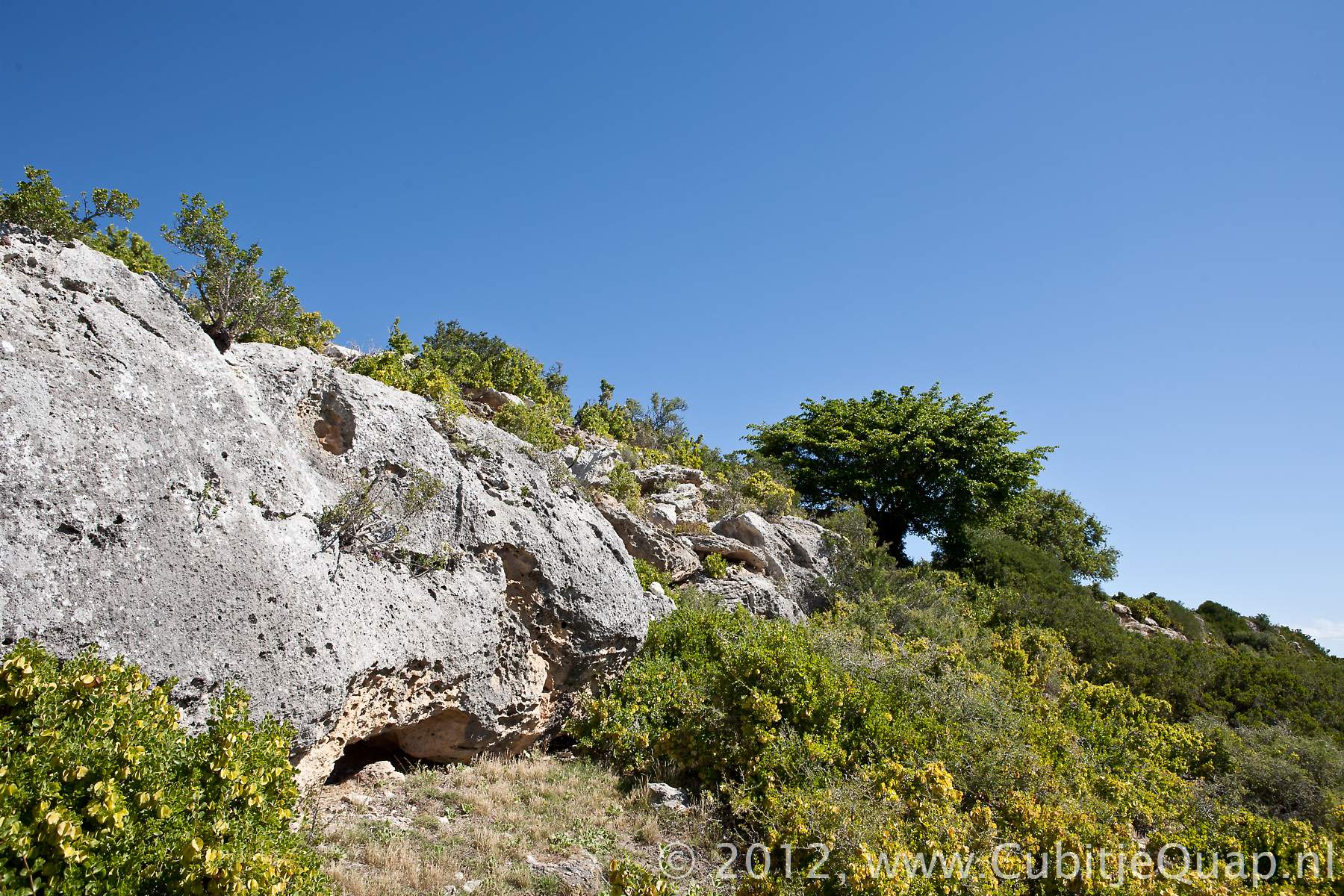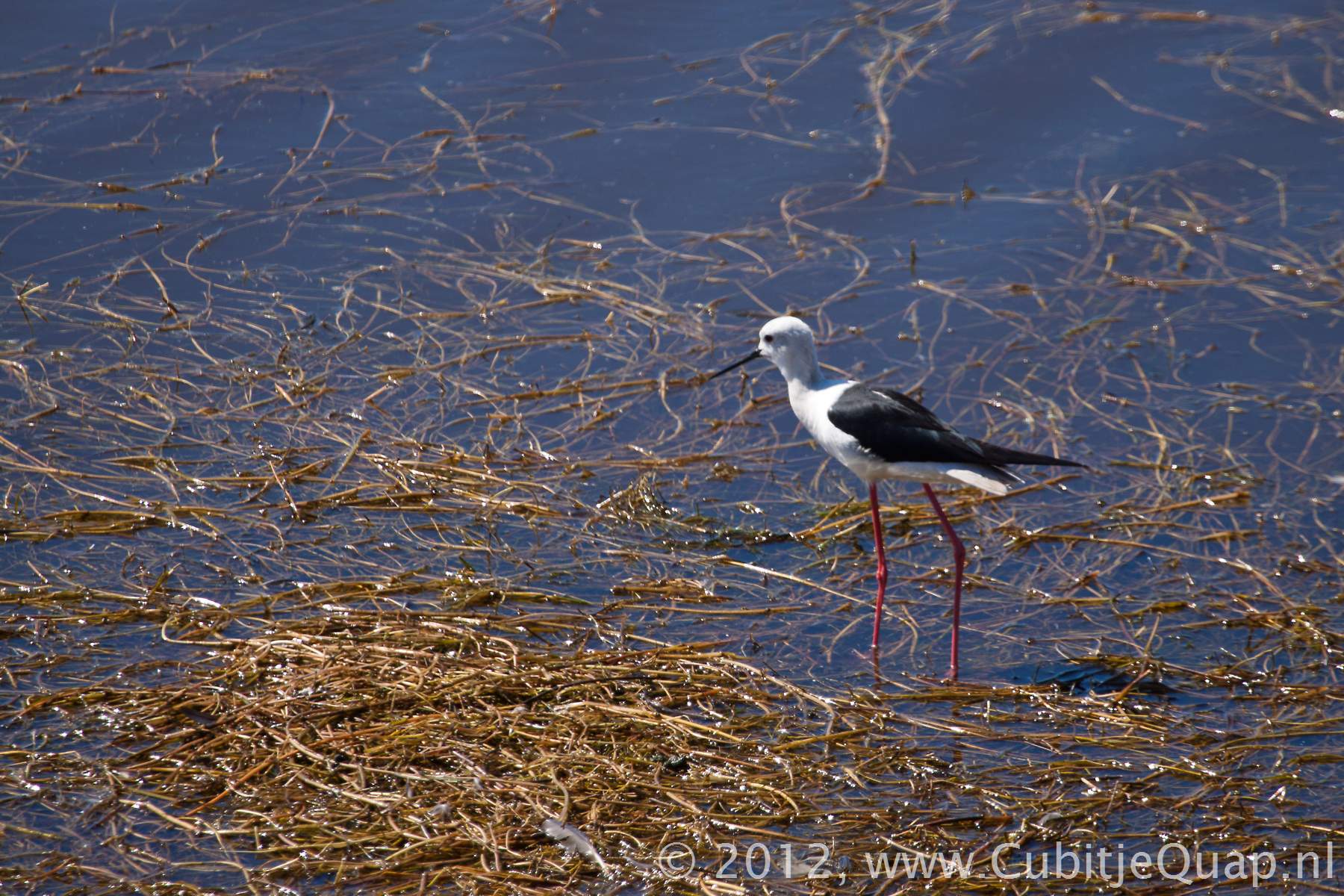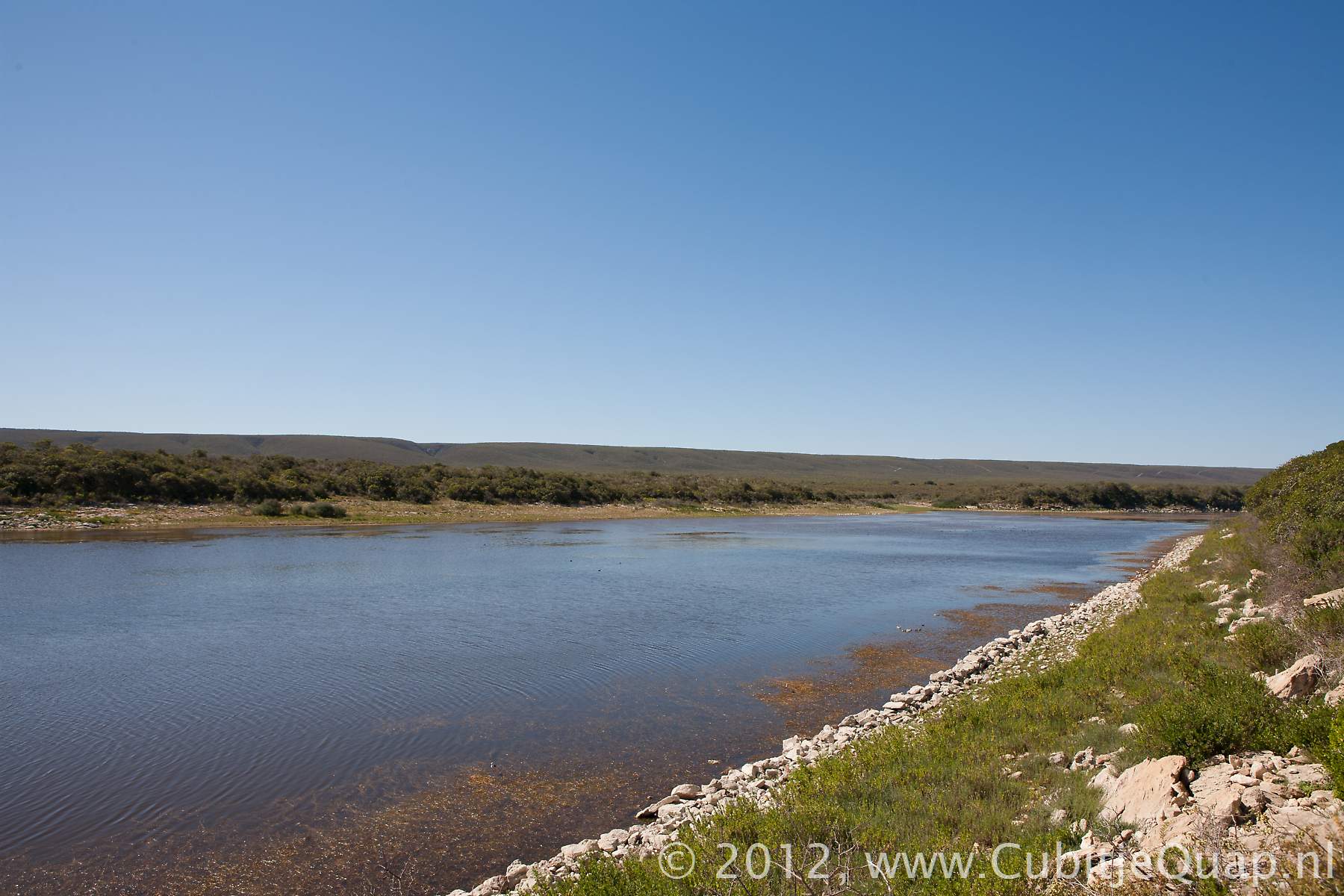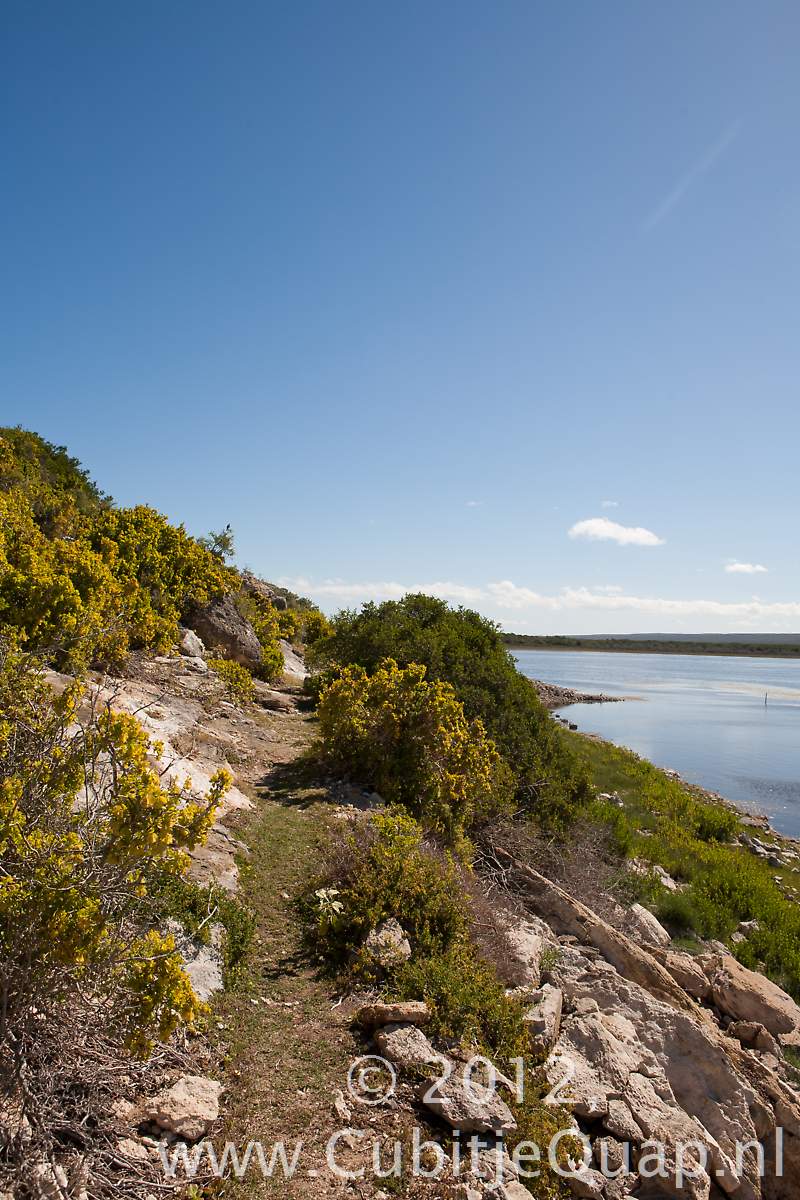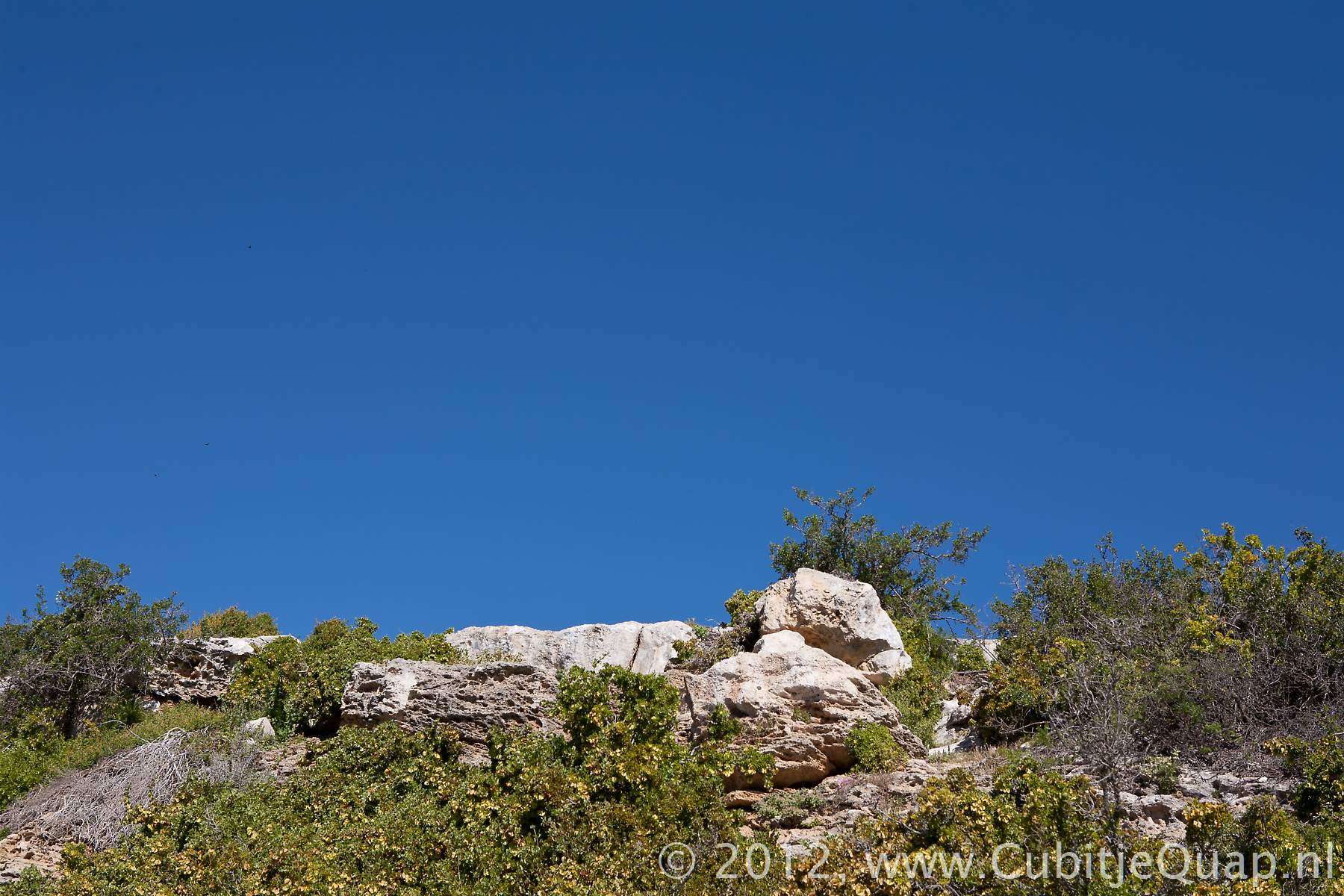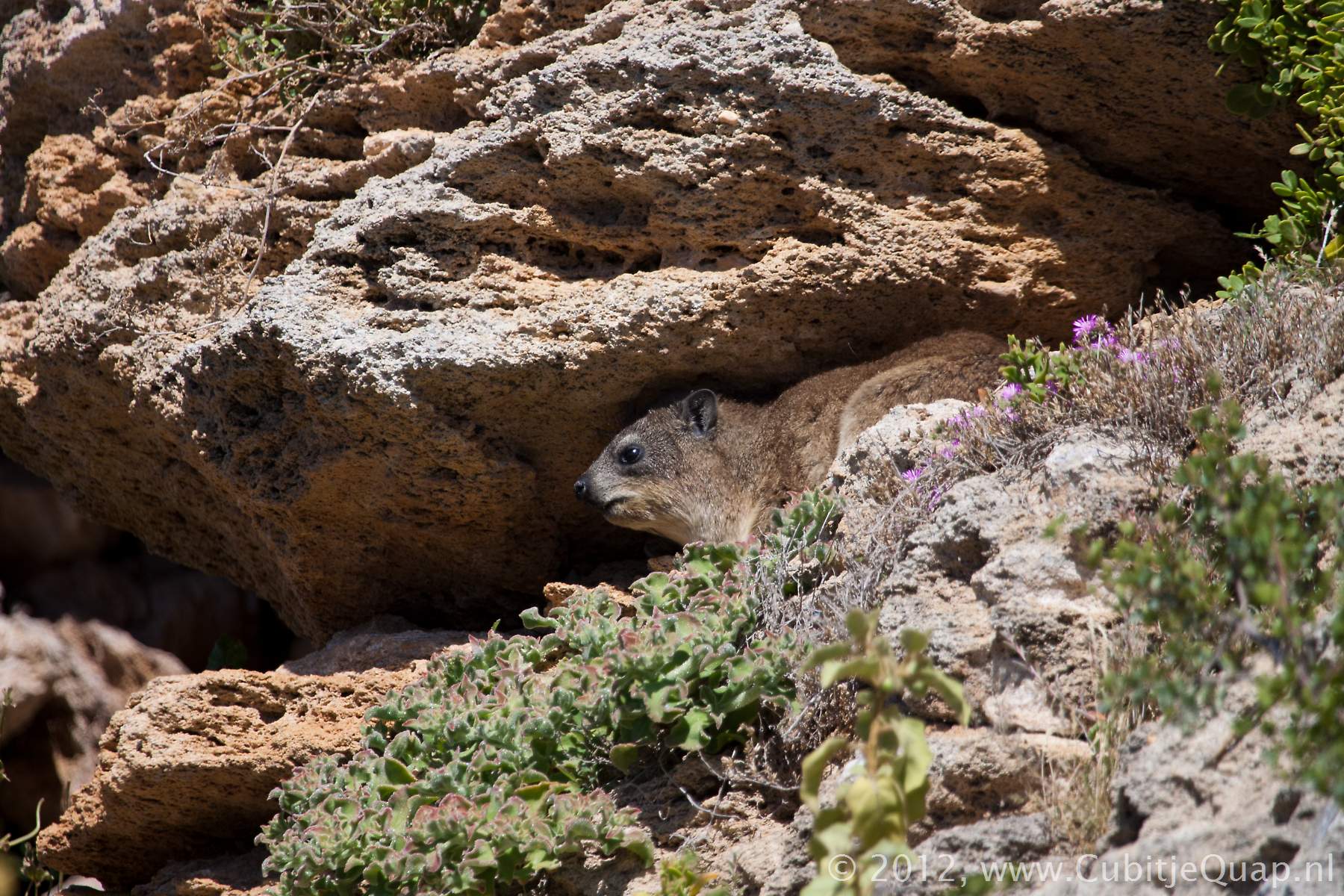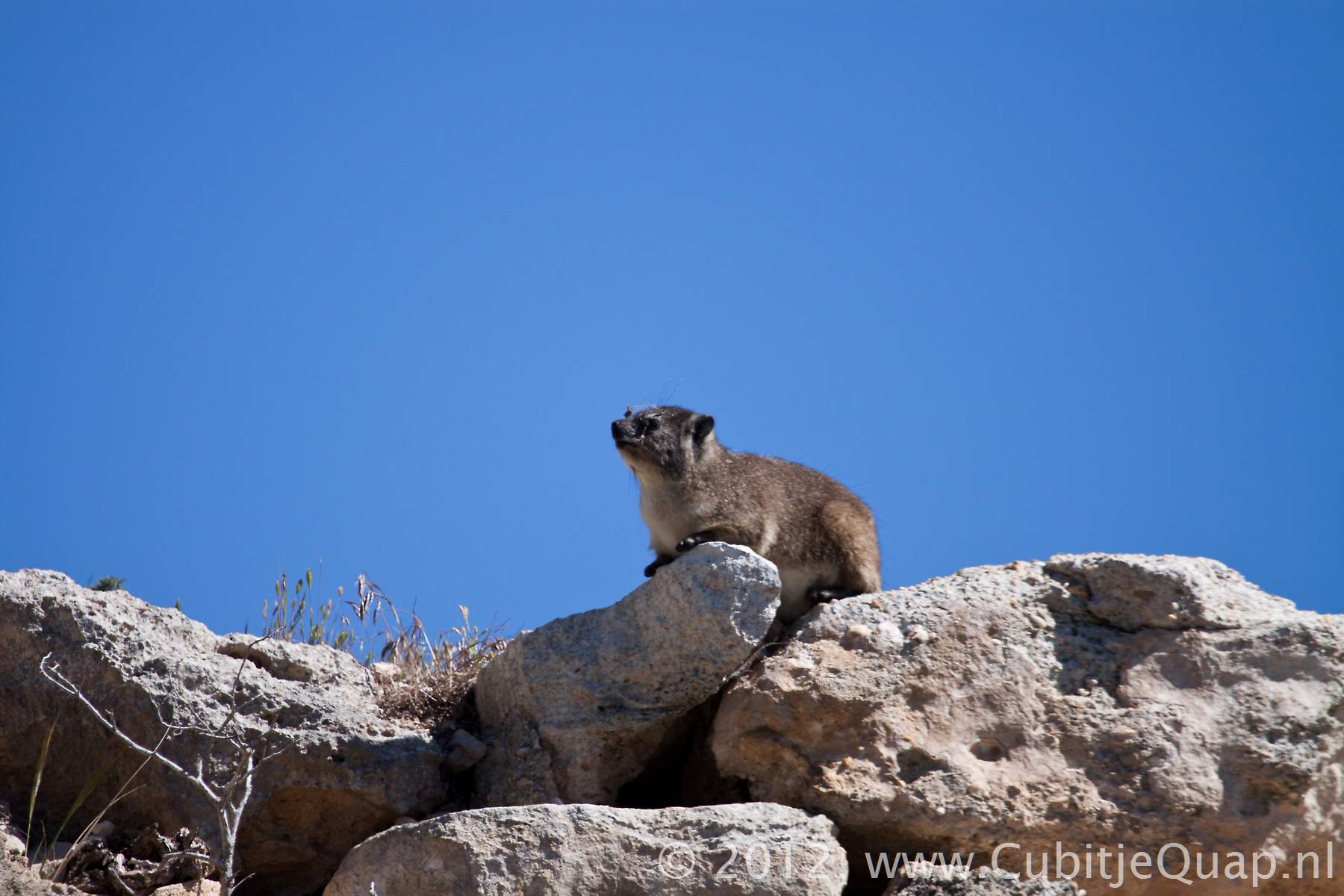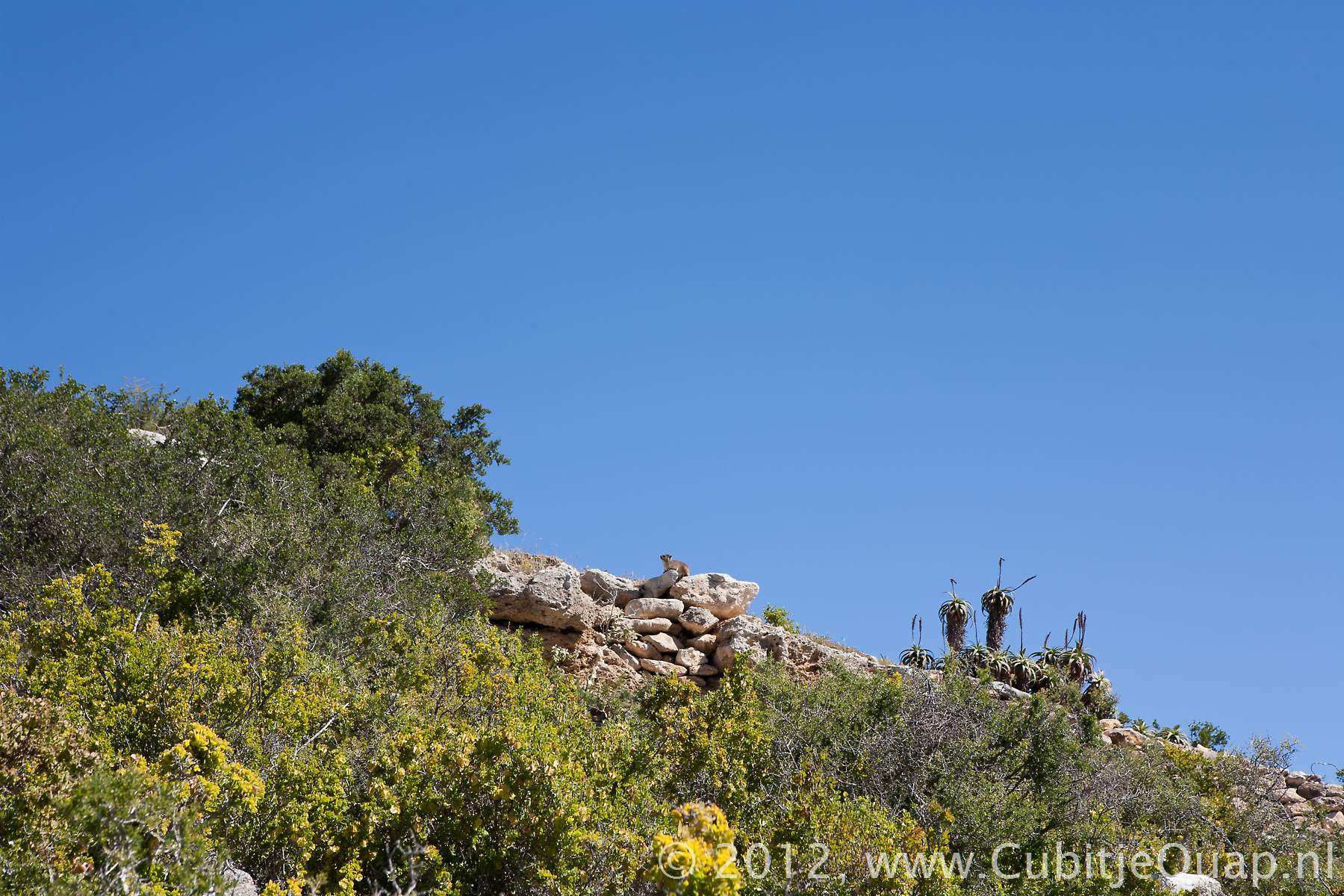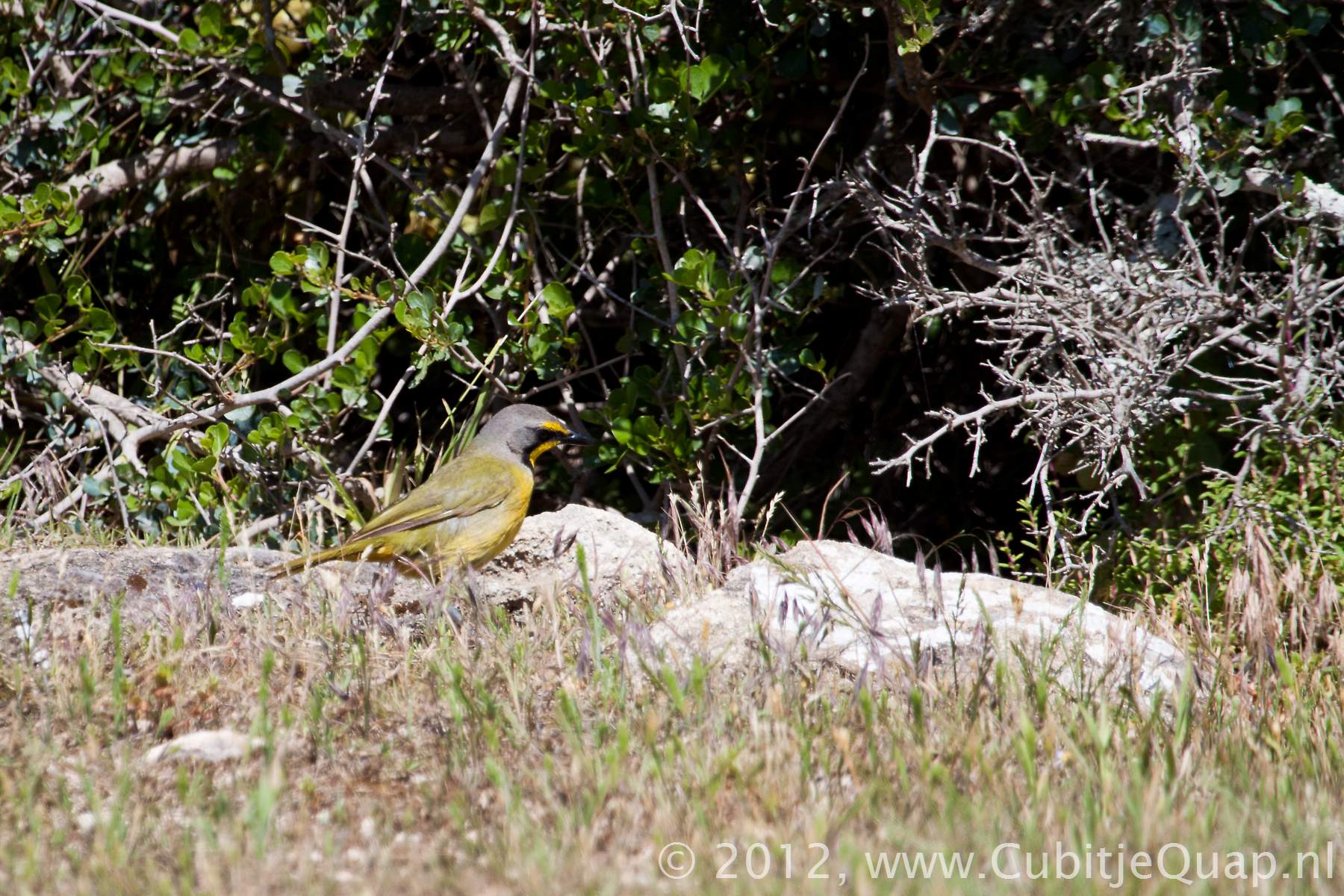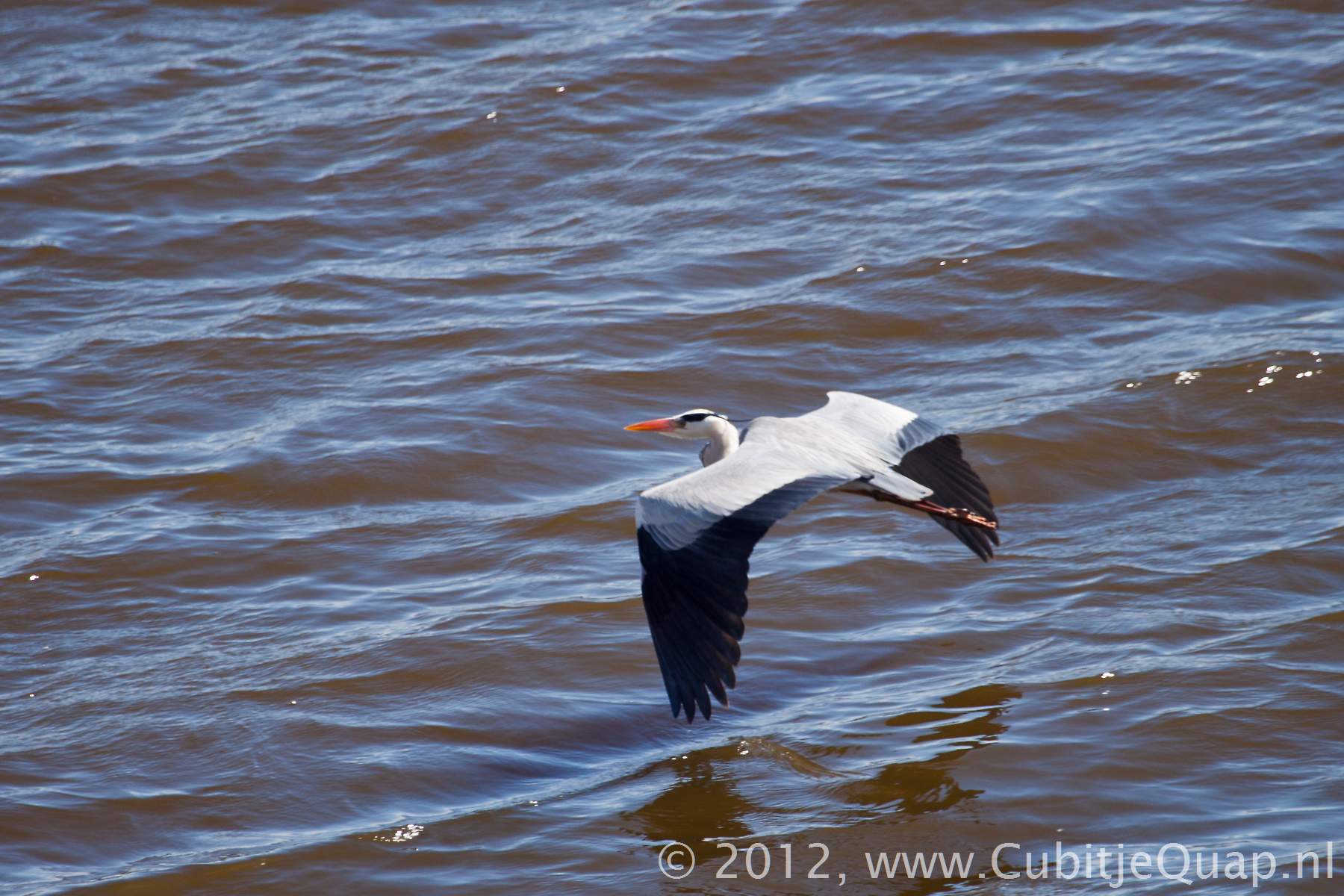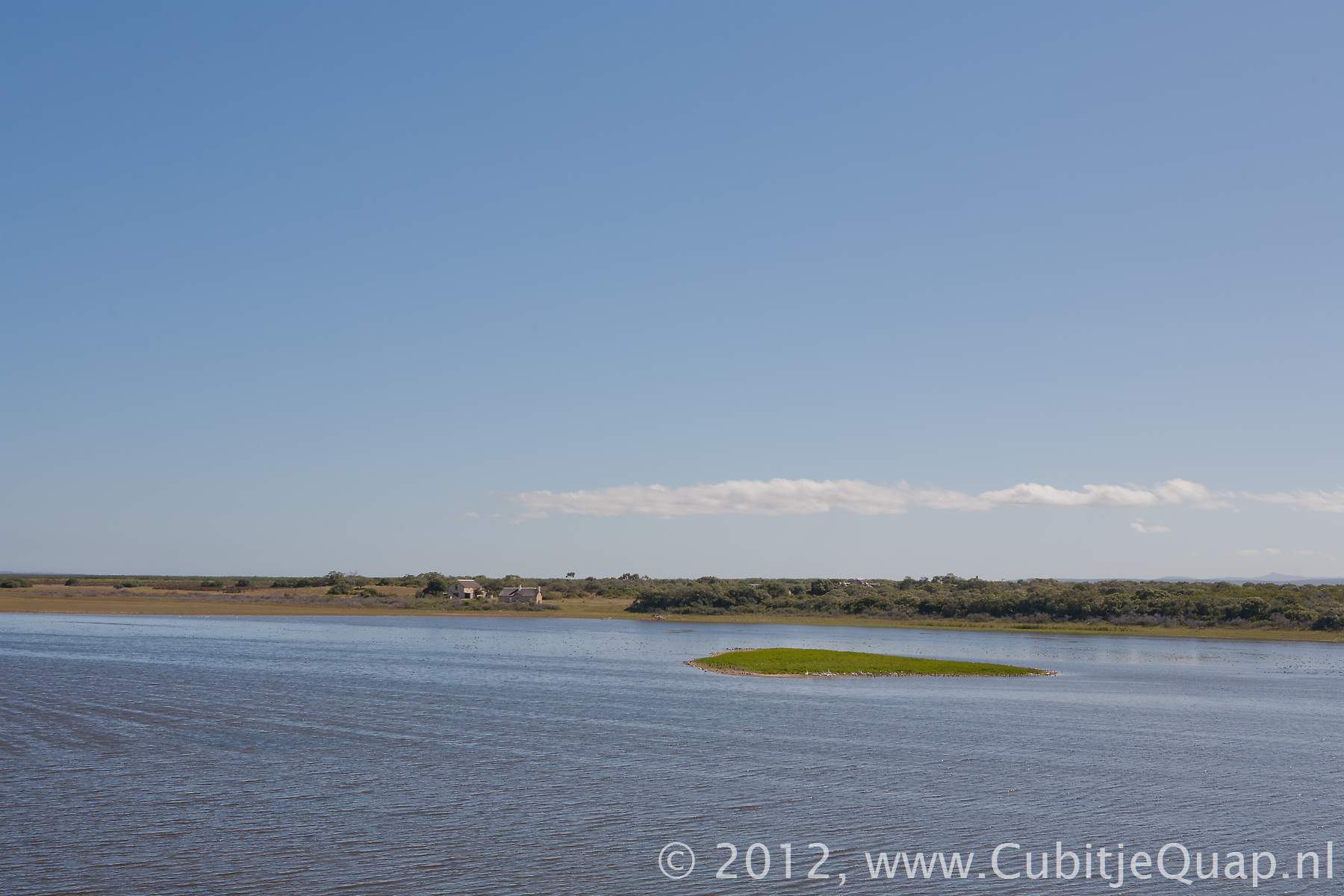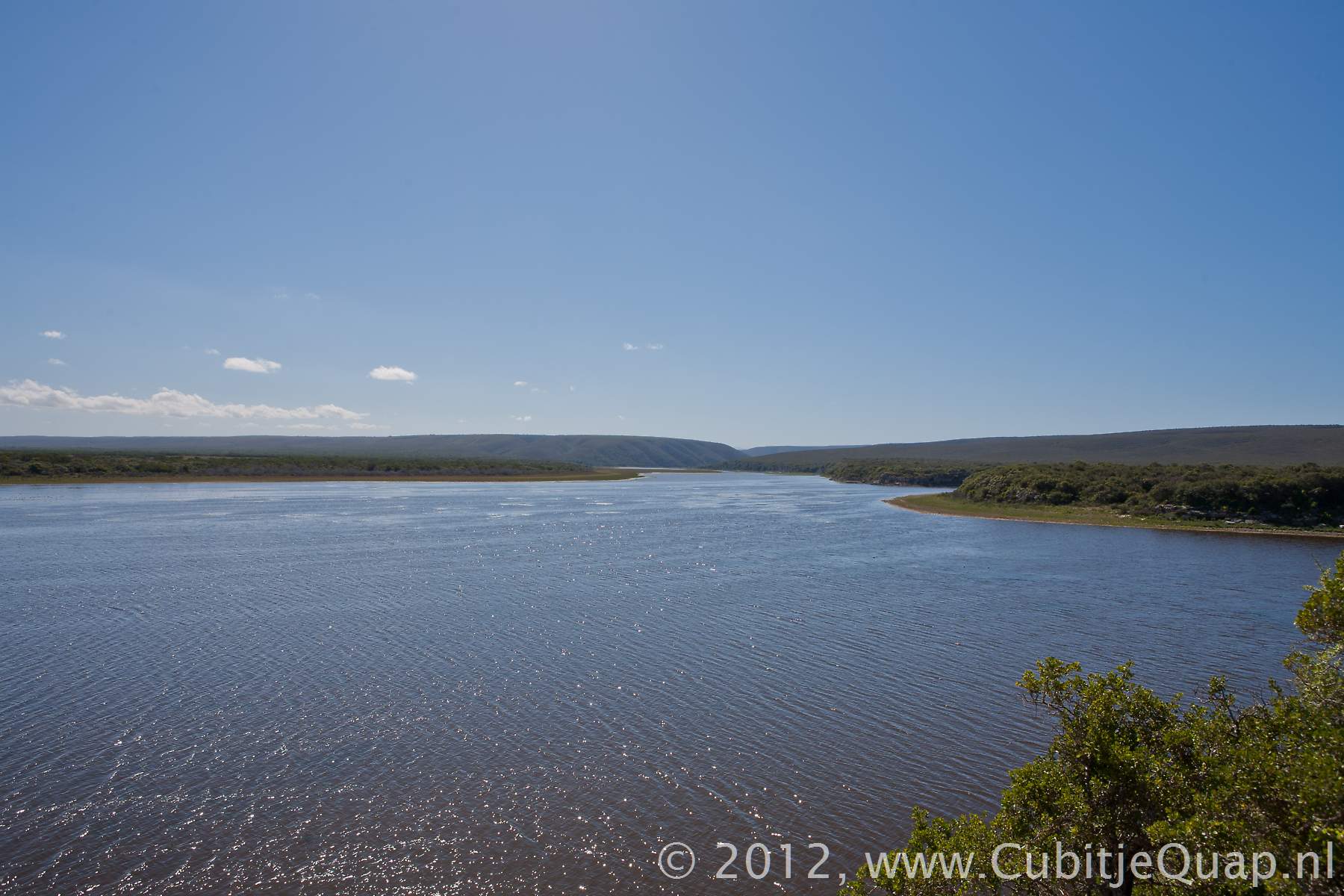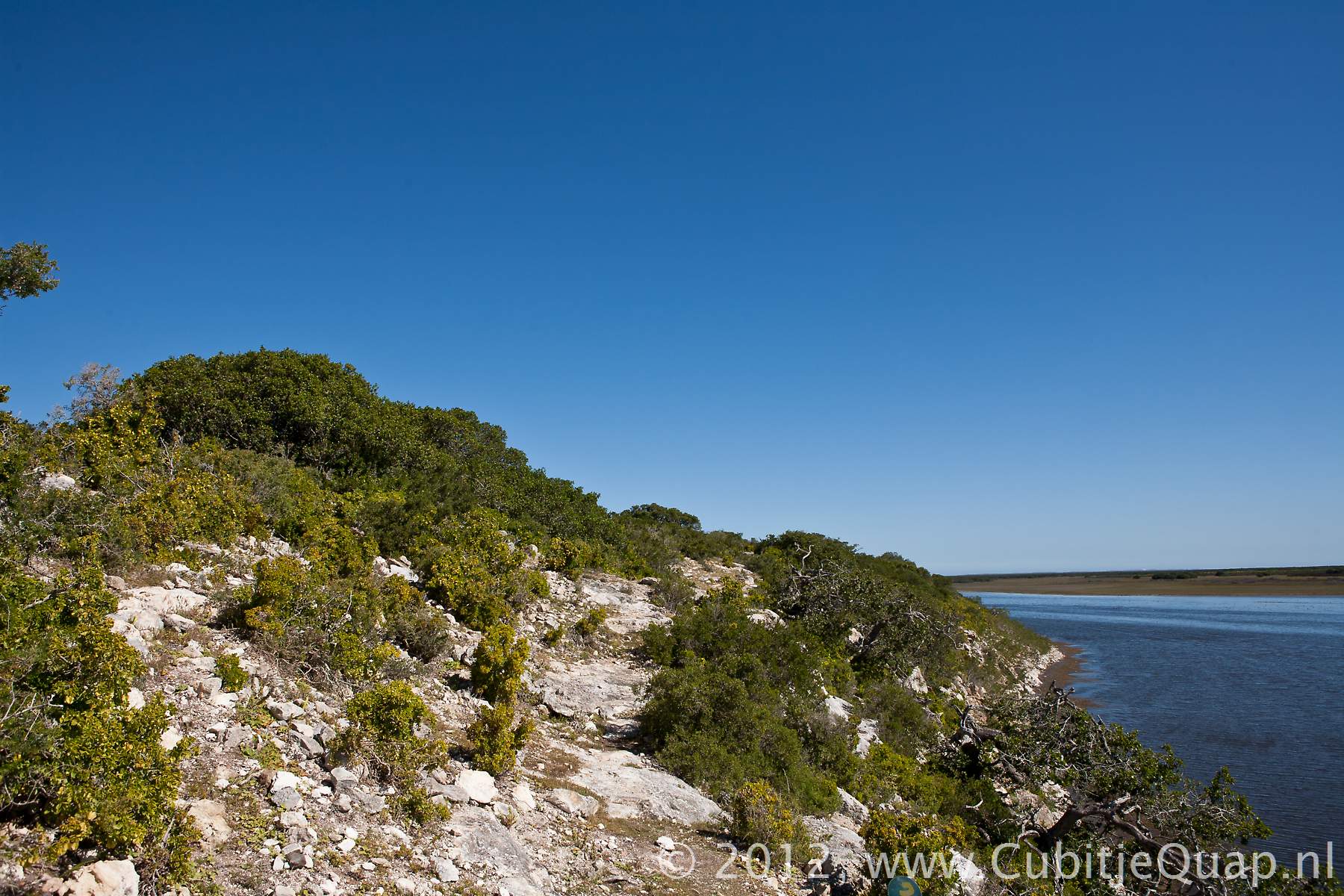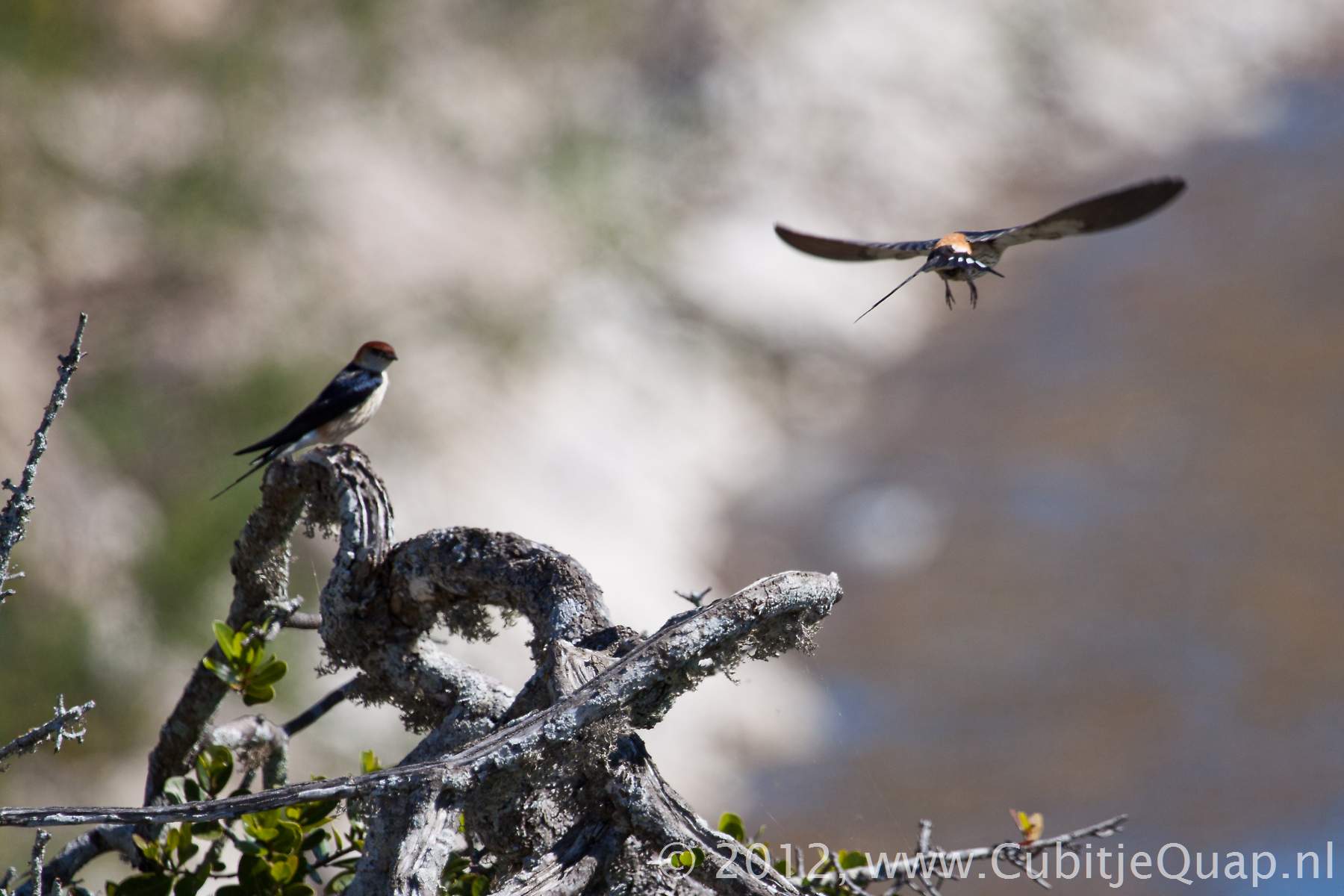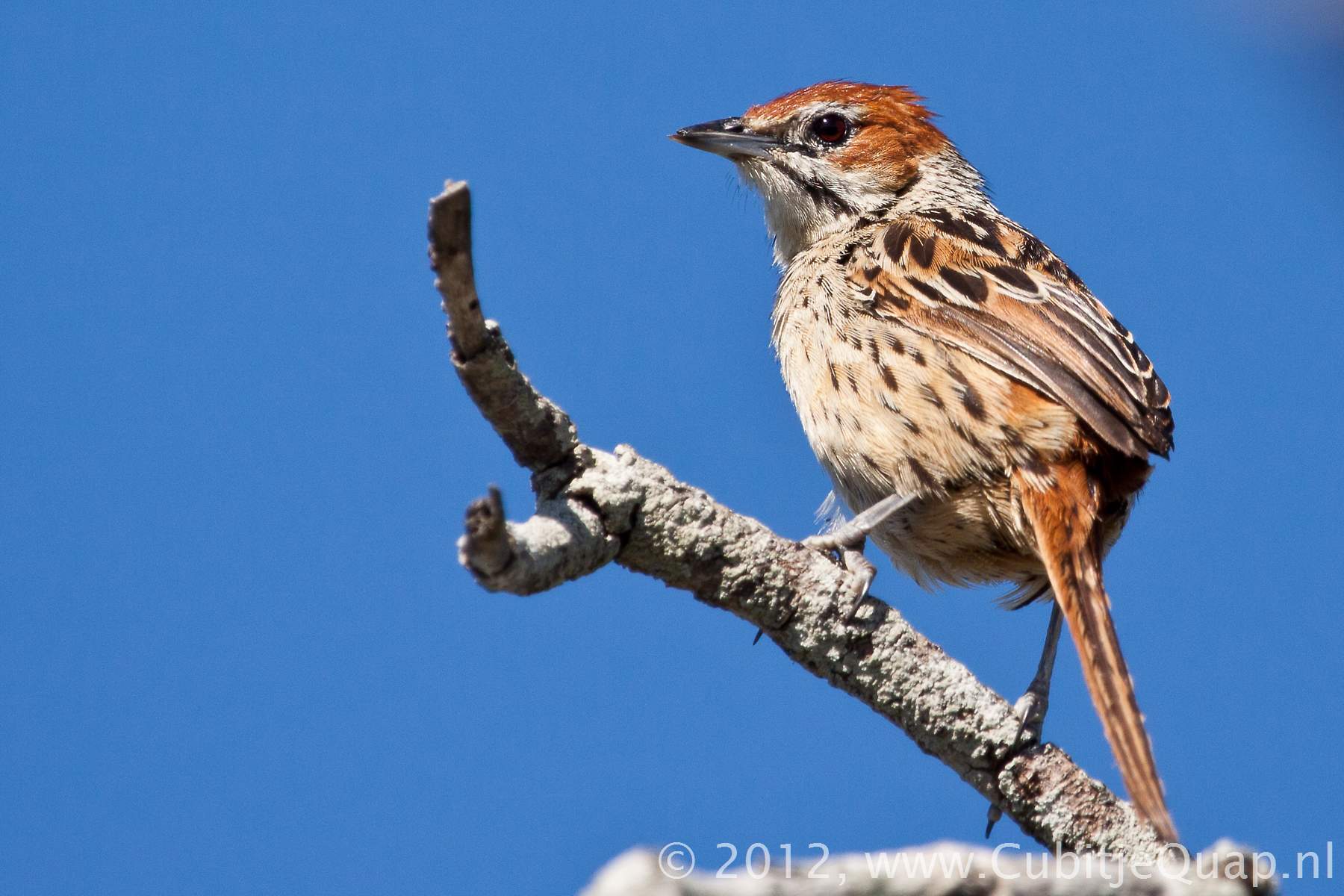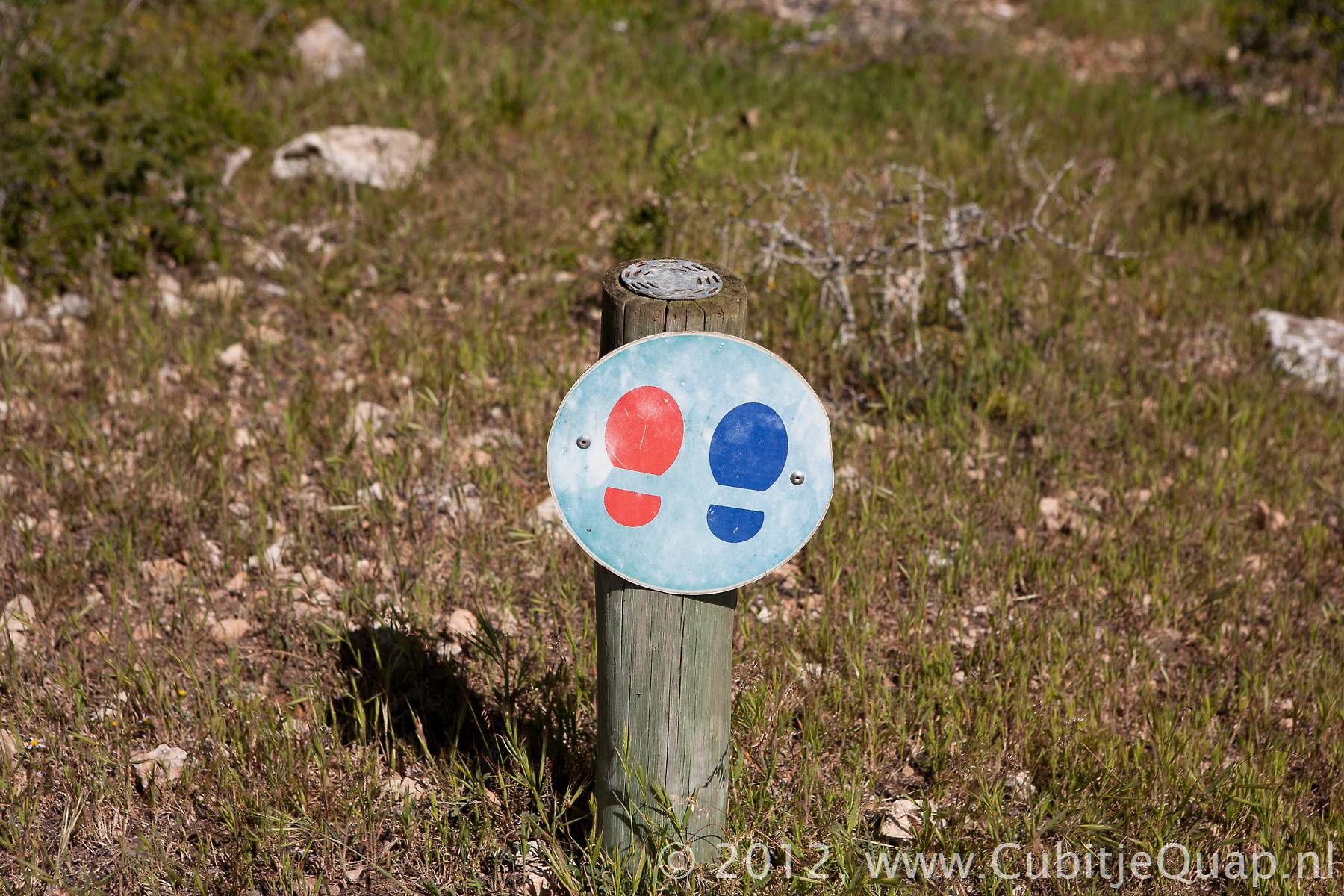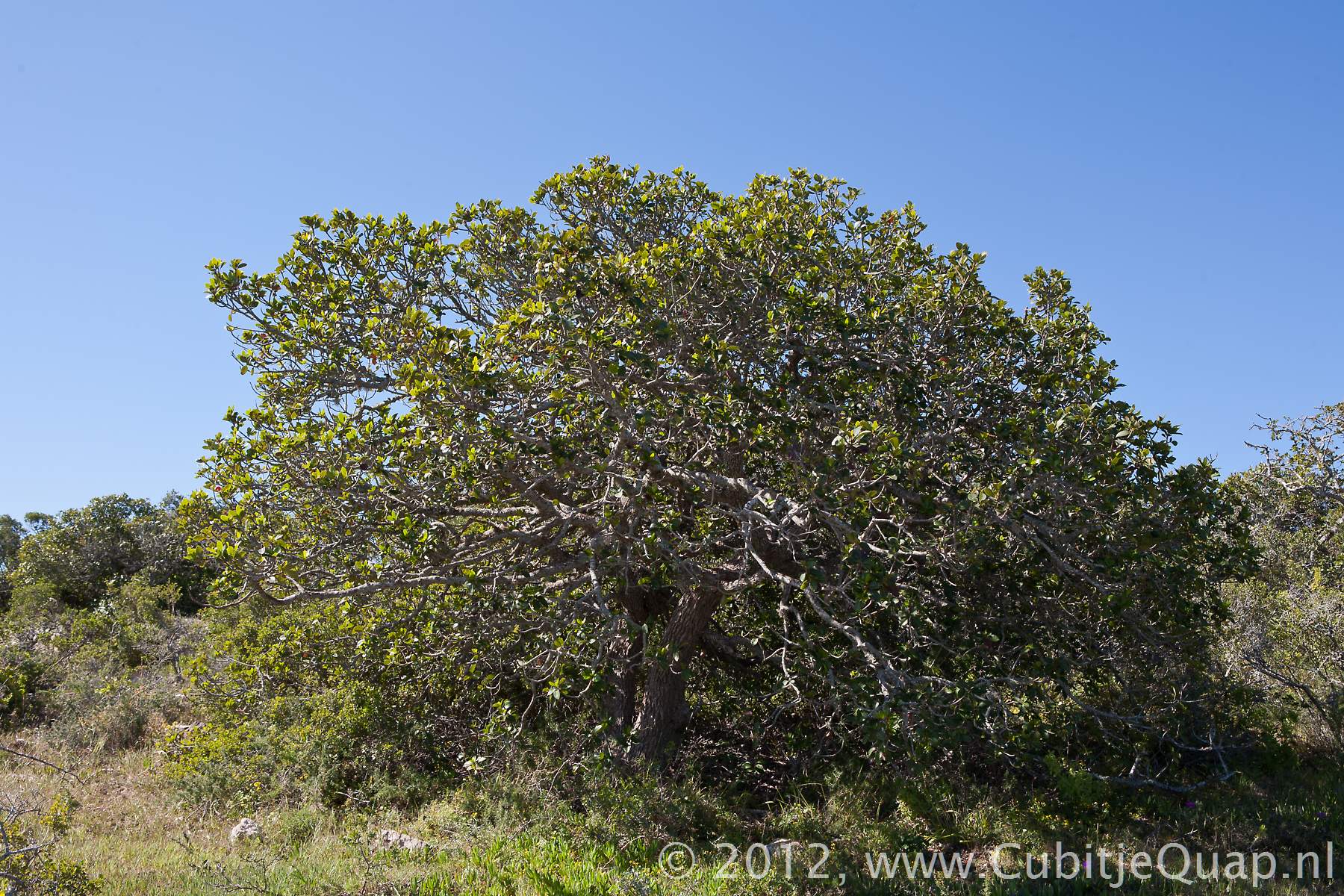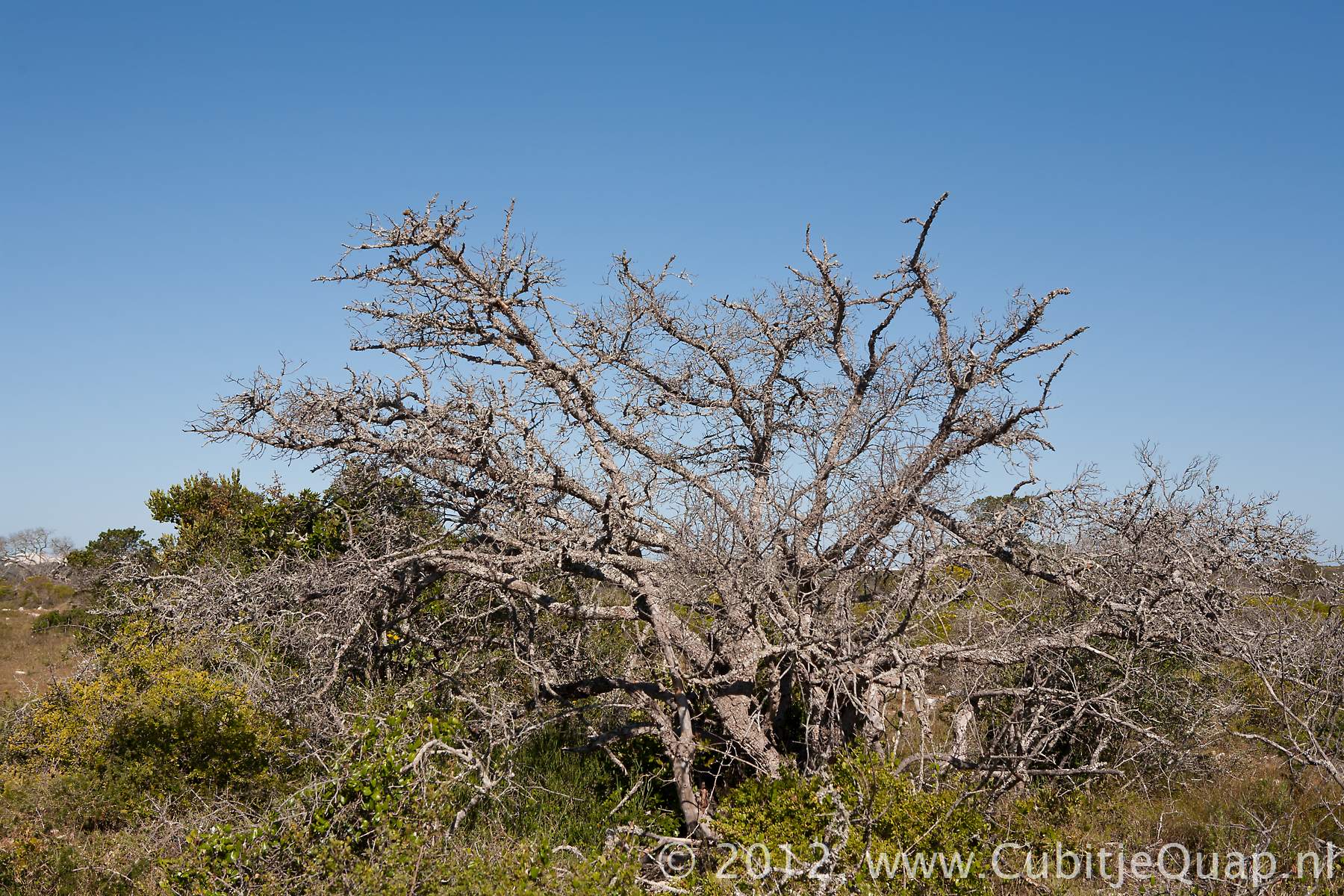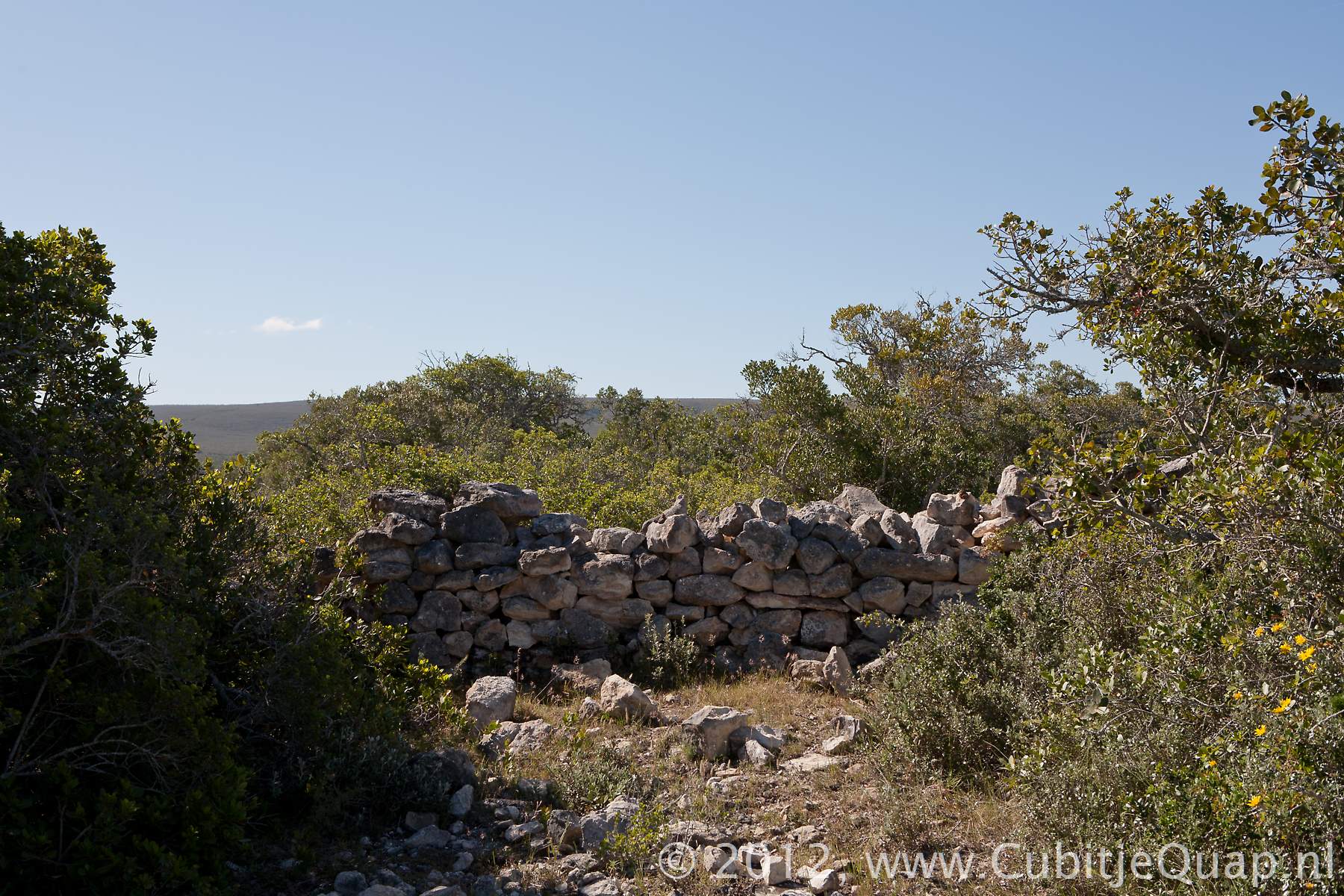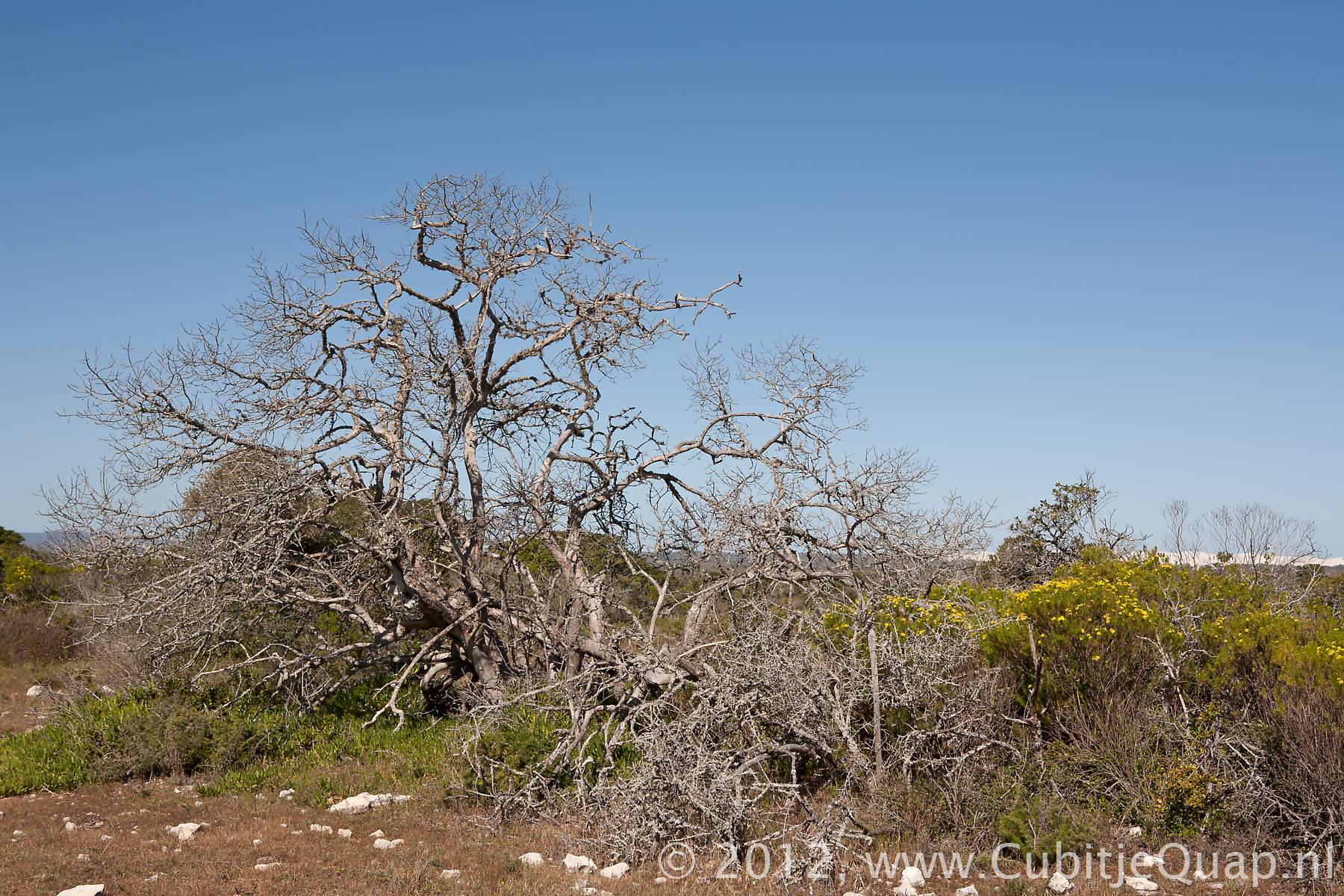- Proteas (tall shrubs with large leaves)
- Ericas (heath-like shrubs)
- Restios (wiry, reed-like plants which are always present in fynbos)
- Geophytes (bulbs that store moisture in fleshy underground organs)
The reserve has 86 mammal species. Most notable are the rare bontebok and Cape mountain zebra, as well as eland, grey rhebuck, baboon, yellow mongoose, caracal and the occasional leopard.
Marine mammals such as dolphins and seals occur in the waters off the coast and southern right whales calve and mate in the sheltered bays of De Hoop each year between May and December. At least 250 species of fish occur in the marine protected area.
A variety of resident and migratory bird species are found in the reserve and more than 260 species have been recorded. The De Hoop Vlei attracts large numbers of water birds. The only remaining breeding colony of the rare Cape vulture in the Western Cape is located at Potberg.
De Hoop vlei is a landlocked coastal lake that was formed when the mouth of the Soutriver was blocked by sandbars. Currently 2,5 kilometers of mobile sand dunes separate the vlei from the ocean. Both sub-surface springs and the Sout- and Potteberg rivers form the watersources for the lake.
The ecosystem supports a great variety of life, from microscopic lifeforms, frogs and fish waterbirds and other animals. ledges and outcrops along the cliffs provide a habitat for rock dassies.
Walking along the cliffs, overlooking the vlei, it is easy to spot the sandstone buildings on the opposite side of the vlei. These are known as "The Melkkamer" (the milkhouse) and they once formed the center of the farm "The Hoop". The buildings were constructed between 1872 and 1907 and the property has been in use as a farm until 1984. At that time the land was expropriated by the government as a military testing ground. Today, the buildings have been restored and form part of the De Hoop Collection.
Old stone walls can be seen on various places around Die Opstal. These were constructed to separate the grazing livestock from the cultivated lands.


